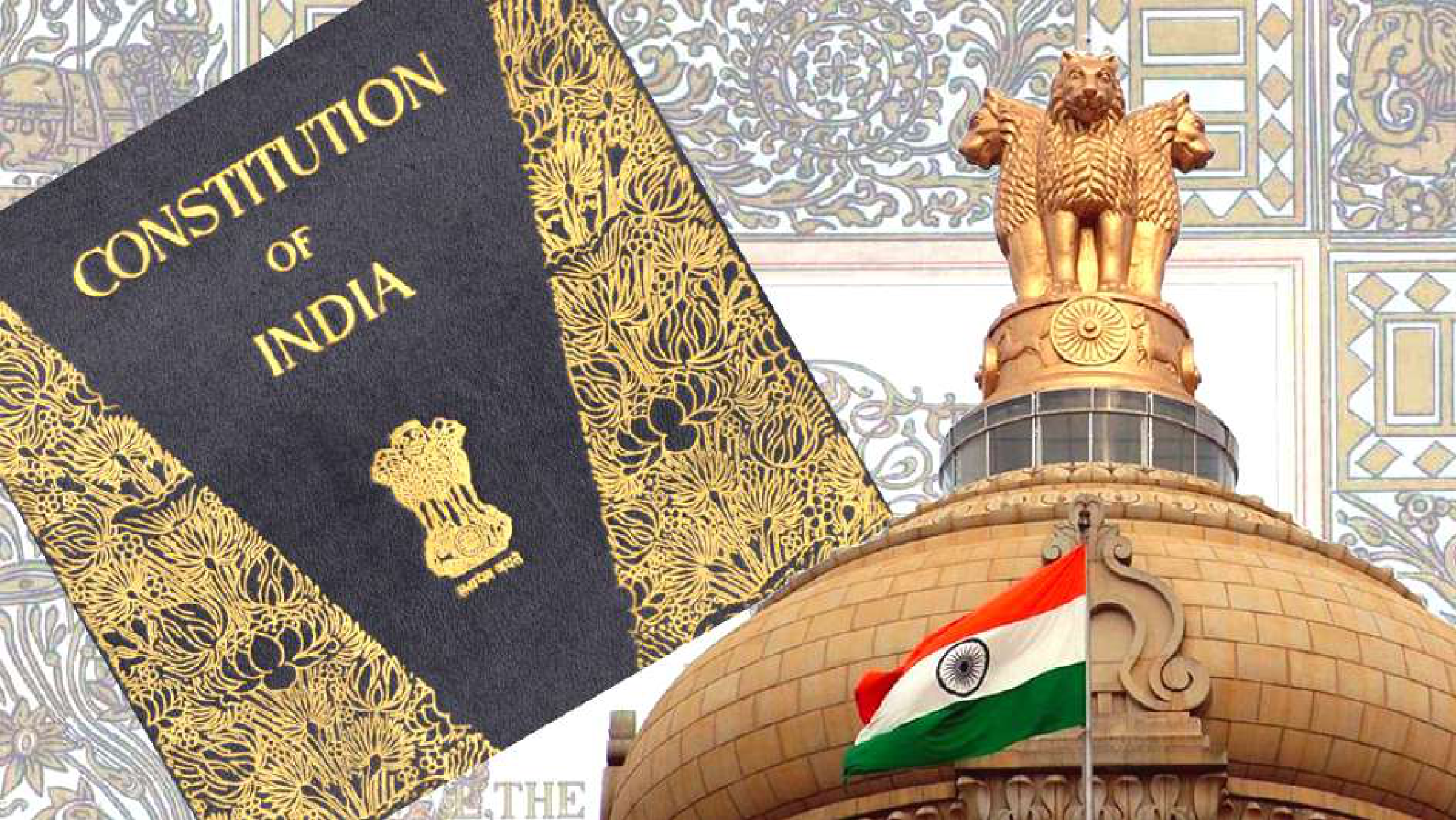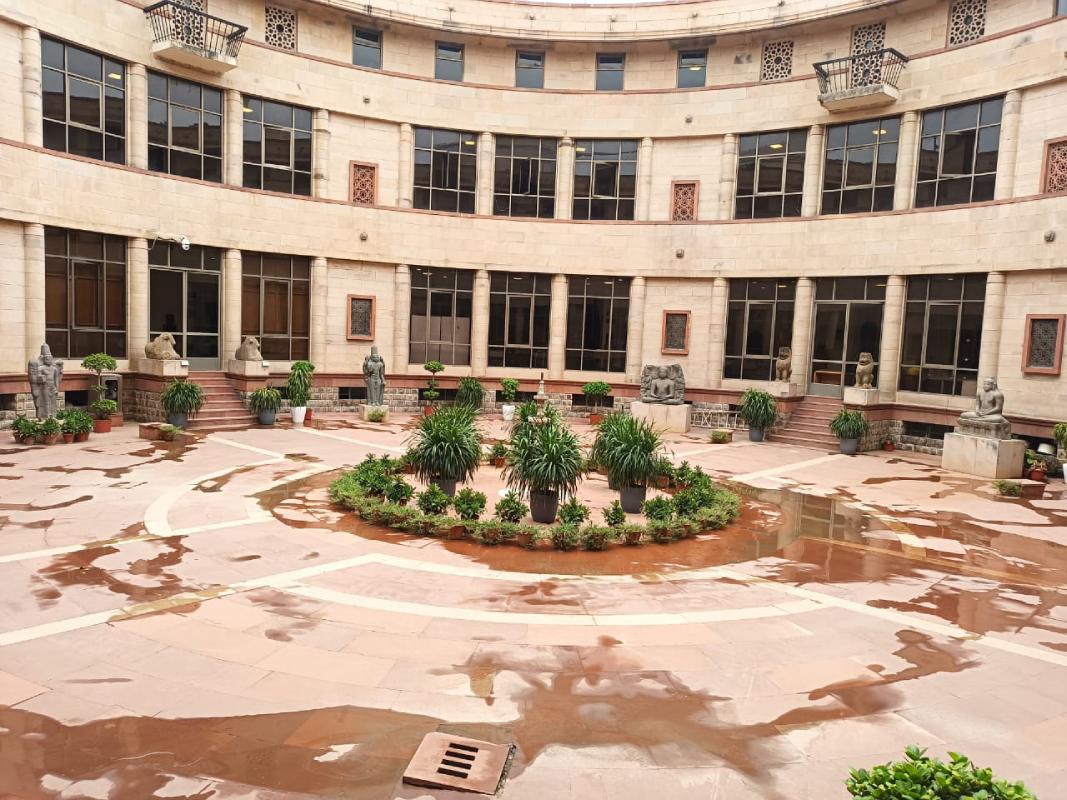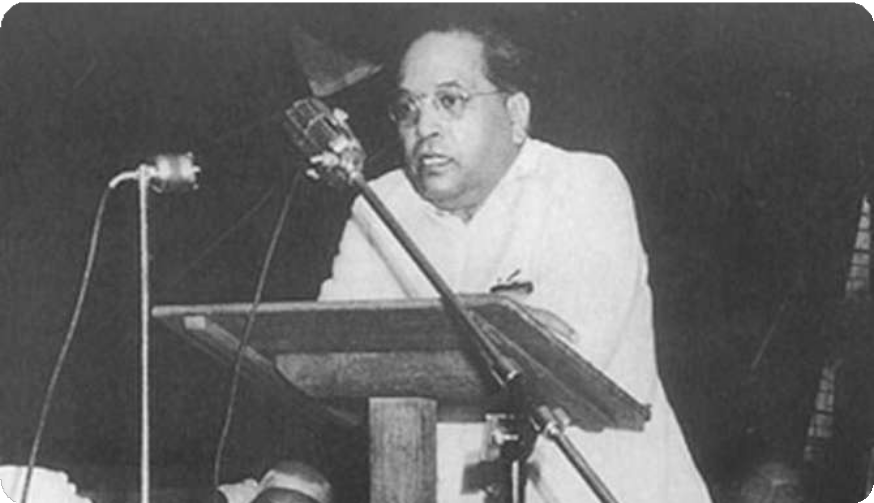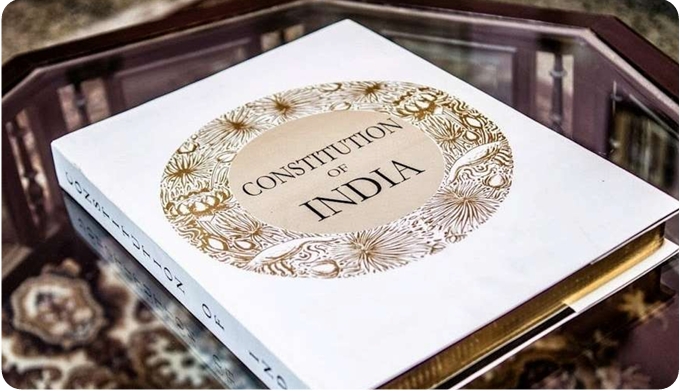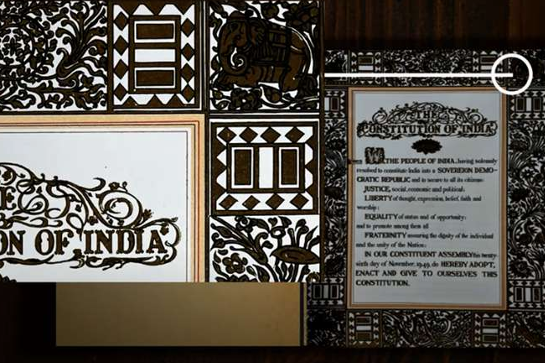Violation of Constitutional Values
The preamble of the Constitution of India states:
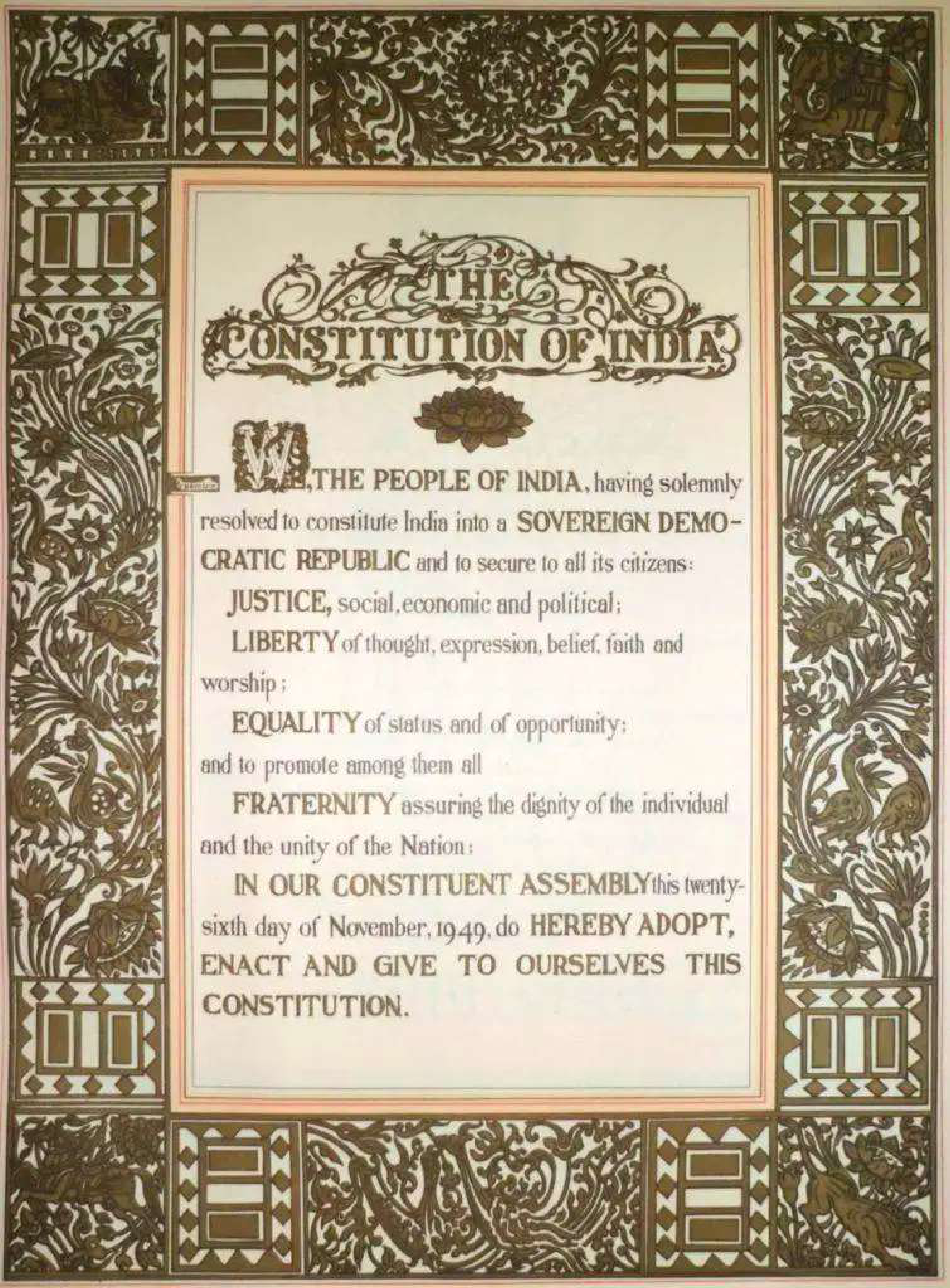
In this study, we document how the values laid down in the preamble have been grossly violated most intensely in the period since 2014.
Justice
The Preamble to the Constitution of India reflects the fundamental values, philosophy and objectives of the Constitution. The term ‘justice’ within the Preamble embraces three distinct aspects – political, social, and economic. The term Political justice is broadly related to the notions of political and civil liberties. It entails establishing the rule of law, removing arbitrariness from government, as well as providing citizens with an equal access to, and an equal voice in the government. Social and economic justice, on the other hand, is about eliminating the fundamental social and economic inequalities present in society. The Founding Fathers of the Constitution recognized that political justice by itself would not be sufficient to solve the socio-economic problems which are deep rooted in society. Therefore, they stressed that the ultimate objective of political justice has to be in the creation of a new social order based on the doctrine of social and economic justice.
The core commitment to social, economic and political justice lies in parts III and IV of the Constitution, i.e. in the Fundamental Rights and in the Directive Principles of State Policy. These constitute the conscience of the Constitution. While the Fundamental Rights are justiciable, the Directive Principles are not. The latter, however, are no less important. The reason for the distinction between the two is that, while the State could straightaway guarantee political and civil liberties contained under ‘Fundamental Rights’, it could only secure economic and social justice over a period of time, as the process of social and economic change took place. Though the latter set of rights could not be made justiciable, nonetheless the State was duty bound to do its utmost to apply these precepts when making laws.
The essence of the Directive Principles is contained in articles 38(1) and 38(2) of the Constitution. Article 38(1) lays down that “the State shall strive to promote the welfare of the people by securing and protecting as effectively as it may, a social order in which justice, social, economic, and political, shall inform all the institutions of the national life.” And, article 38(2) states, “the state shall, in particular, strive to minimize the inequalities in income, and endeavour to eliminate inequalities in status, facilities and opportunities, not only amongst individuals but also amongst groups of people residing in different areas or engaged in different vocations.” Essentially, the Directive Principles enshrine the social and economic precepts, which aim at realizing the goal of a Welfare State.
In its pursuit of social and economic justice the Constitution of India has abolished untouchability, prohibited exploitation of women, children and other weaker sections, protected interests and rights of minorities and tribal people and advocated affirmative action to raise the standard of the people oppressed over the ages. The ideal of a just and egalitarian society remains one of the foremost commitments under the Constitution.
The following are some instances where the constitutional notion of justice had been undermined. The discussion is limited to issues of social and economic justice.
- The Preamble to the Indian Constitution
- Granville Austin, the Indian Constitution—Cornerstone of a Nation, Oxford, 1966.
- Ibid
- D.D Basu, Introduction to the Constitution of India, Prentice Hall of India Pvt. Ltd.
- Article 38(1) of the Indian Constitution
- Article 38(2).
Executive Interference in Judicial Appointments: NJAC Act 2014
In the early decades after independence judicial appointments were made primarily by the executive after consultation with the judiciary. Although it was not specifically provided for anywhere, the norm of seniority was always followed in the appointment of Judges. However, the elevation of Justice A.N. Ray to the post of Chief Justice of India created controversy when he was appointed the CJI superseding three senior judges.
Consequently, questions were raised over the independence of the judiciary. The provisions dealing with the appointment and transfer of judges came up for review in S.P. Gupta v President of India (First Judges Case) in 1981. In the said case, it was held by the SC that the opinion of the Chief Justice did not have primacy, and the Union Government was not bound to act in accordance with the opinion of the constitutional functionaries, as the Executive was accountable, but the Judiciary had no accountability. This ruling gave the executive primacy over judicial appointments.
In Supreme Court v Union of India (Second Judges Case) in 1993, a nine judge bench of the SC overruled the First Judges Case and held that in the event of disagreement in the process of consultation, the view of judiciary was primal, and the executive could appoint judges only if it was in conformity with the opinion of the Chief Justice. This case led to the introduction of the collegium system consisting of the CJI and two senior most judges of the SC.
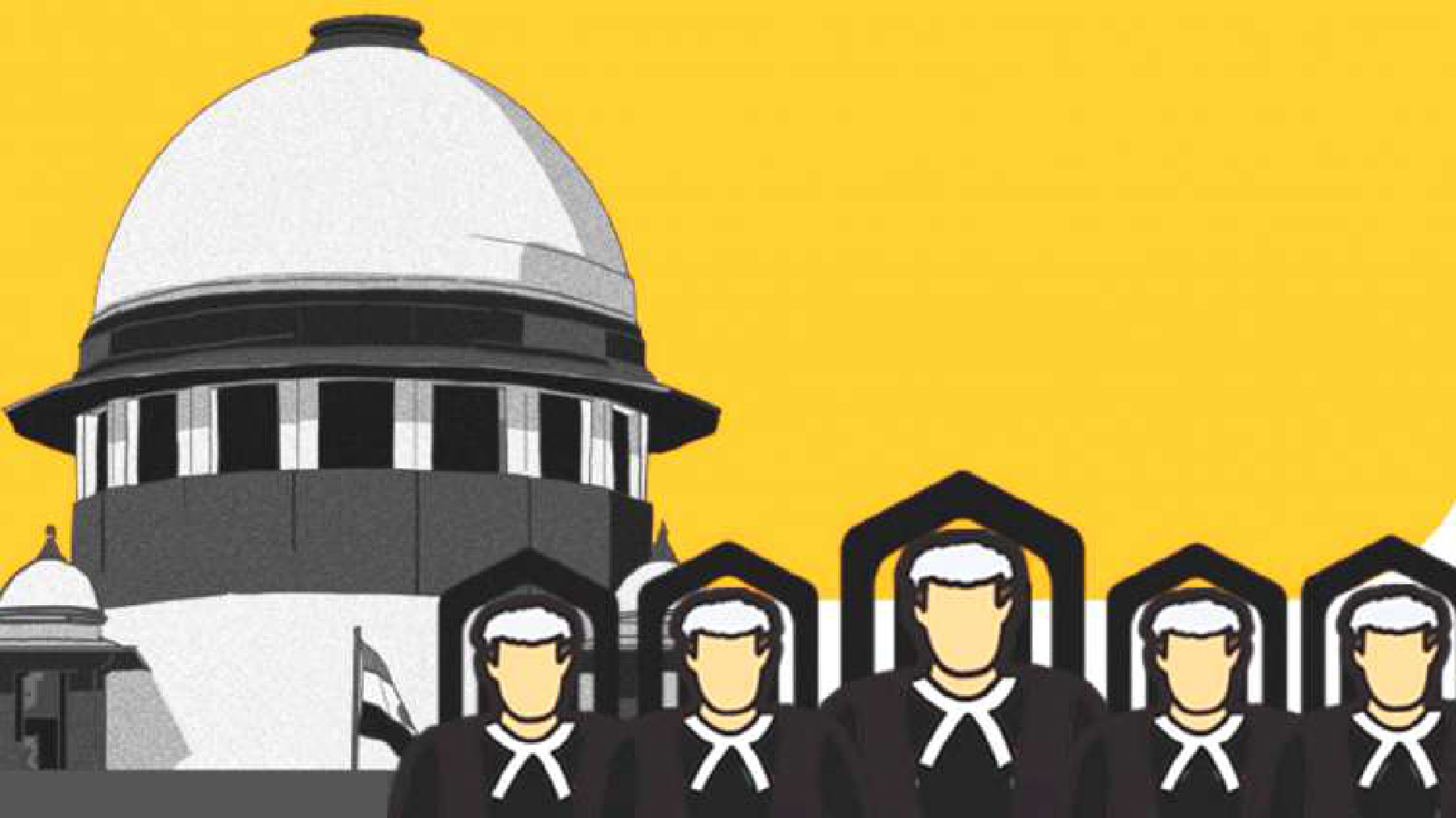
Thereafter, in the third judges’ case in 1998, the SC expanding the collegium system to a five member body, which included the CJI and four more senior most judges, clarified that it was not the CJI’s individual opinion that mattered, but an institutional opinion formed in consultation with the senior-most judges. At the time, procedures and guidelines were laid down regarding judicial appointments and the opinion of the collegium was made binding on the President, while the executive’s role was reduced to a minimum. Thus, the Collegium system of appointment became the law of the land. This judgment reduced the role of the Executive in judicial appointments and finally established judicial independence over appointments.
- https://indianlegalsolution.com/justice-a-n-ray-know-your-judges/
- AIR 1982 SC 149
- (1993) Supp 2 SCR 659
- 1998 Supp 2 SCR 400
However over the years several critiques of the collegium system emerged. Firstly, it was considered to be an over-reading of the constitutional provisions. It was argued that if it was the intent of the framers to have a collegium, the Constitution would have explicitly stated this. Secondly, the system of appointments also attracted criticism for carrying nepotistic tendencies. Several scholars pointed out that a system like this, where the judiciary itself decides who becomes the part of the judiciary, is highly susceptible to favouritism, and may even result in a situation of judicial aristocracy.
In this context Ambedkar himself had commented, “I personally feel, no doubt, that the Chief Justice is a very imminent person. But after all the Chief Justice is a man with all the failings, all the sentiments and all the prejudices which we as common people have; and to allow him practically a veto upon the appointment of judges is really to transfer the authority to the Chief Justice which we are not prepared to vent in the president or on the Government of the day. I therefore think that is also a dangerous proposition….Nowhere in the world, judges appoint judges. Does it mean no other country has an independent judiciary? The independence of a judge comes from his character and not from the source of appointment.
Owing to these criticisms, the Collegium system was sought to be done away with right from 1990 with attempt came when the National Judicial Appointments Commission Act, 2014 was introduced with the 99th Constitutional Amendment bill and received presidential assent.

The collegium was to be replaced by the NJAC which comprised of 6 members, which included the CJI, 2 senior most judges, the Law Minister and 2 more eminent members. However, the NJAC was criticized for having too much reliance on the executive and thereby undermining judicial independence. It was felt that, if the executive had influence over who to appoint, the appointments would be political and the NJAC Act and the 99th Constitutional Amendment was struck down by the Supreme Court on grounds of violation of the basic structure.
- Prashant Bhushan, The Dinakaran Imbroglio: Appointments and Complaints against Judges, 44 EPW 10 (2009).
- Ibid
- Dr. BR Ambedkar, CAD, Vol. VIII, 24th May, 1949
- 2nd Constitutional Amendment Bill in 1997, 98th Constitutional Amendment Bill in 2003 and the 120th Constitutional Amendment Bill in 2013
The SC held that, “it is difficult to hold that the wisdom of appointment of judges can be shared with the political-executive. In India, the organic development of civil society has not as yet sufficiently evolved. The expectation from the judiciary, to safeguard the rights of the citizens of this country, can only be ensured, by keeping it absolutely insulated and independent, from the other organs of governance”.
But the Bench admitted that all was not well with the collegium system of “judges appointing judges”, and that the “time was ripe to improve the 21-year-old collegiums system of judicial appointments.”
While the above criticisms of the collegium system are valid and the system is in need of reforms, however, judicial accountability should not become an excuse to go back to system of executive intervention in the judiciary. It needs to be recognized that the primary role of the judiciary is to protect the Constitution from arbitrary executive action.
The Courts act as the final arbiter of constitutional disputes, and can overrule not merely ordinary law enacted by a legislature, but, after the Kesavananda Bharati case, also constitutional amendments, which in the courts’ view infract the “basic structure” of the constitution.
Thus, the institutional integrity of the judiciary requires the courts to enjoy the confidence of the public. Society needs to see judges as bastions of justice, who will stay independent of government to uphold the people’s most fundamental rights.
The NJAC by enabling executive intervention into judicial appointments infringed upon this primary role of the judiciary and undermined judicial independence.

- https://www.thehindu.com/specials/in-depth/njac-vs-collegium-the-debate-decoded/article61470776.ece
- NJAC Act, 2014
- C. Raj Kumar & Khagesh Gautam, Questions of Constitutionality – The National Judicial Appointments Commission, 50 EPW 42 (2015); Indira Jaising, National Judicial Appointments
- Commission – A Critique, 49 EPW6 (2014).
- (2016) 5 SCC 1
- Ibid
- AIR 1973 SC 1461
Three Laws Replacing the Indian Penal Code, Criminal Procedure Code and the Evidence Act
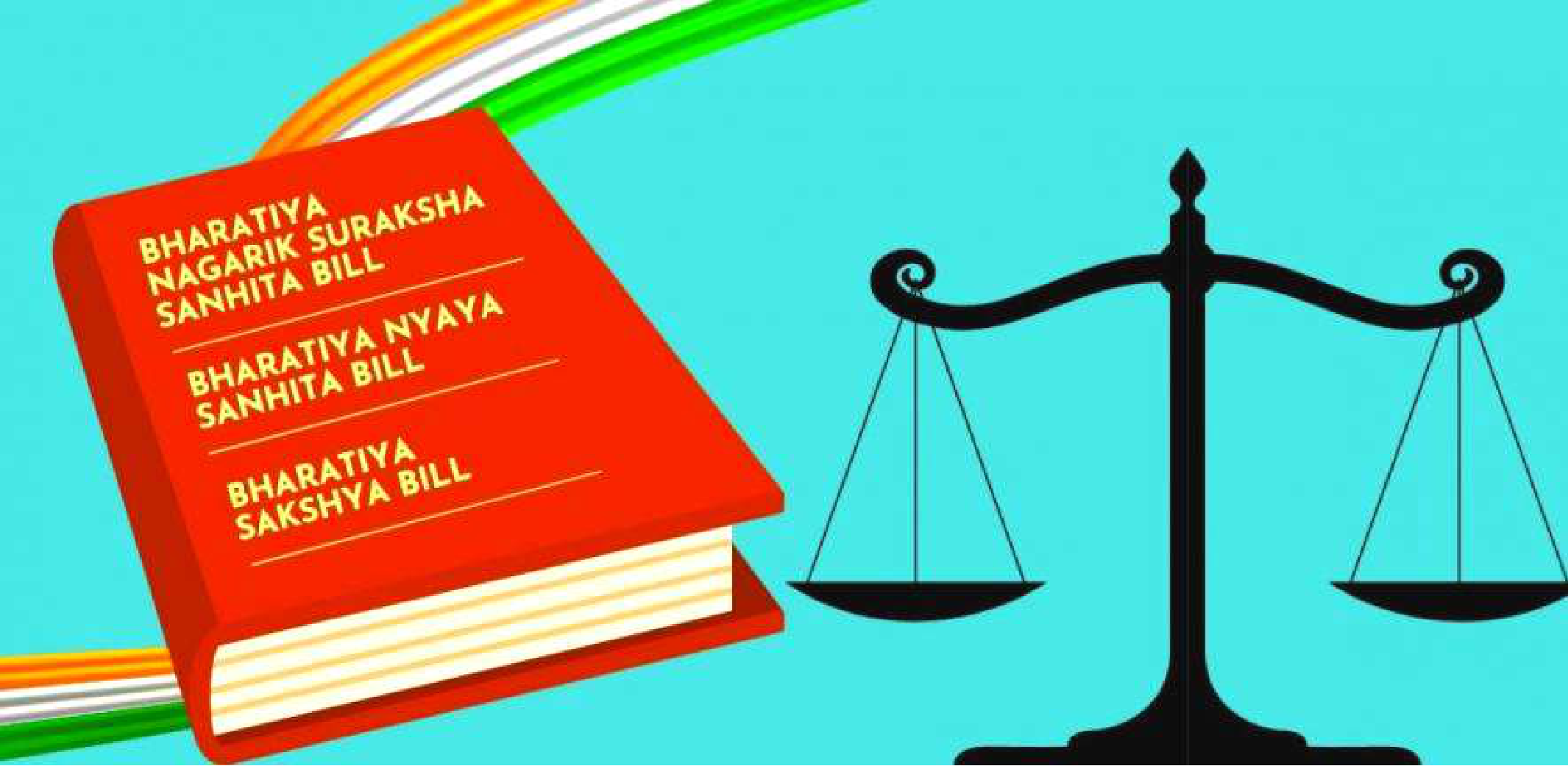
Citizens suffering from any act of injustice first turn to the police and then to the law courts to seek justice. Yet this has remedy seeking process has received a serious setback recently. In the final week of its winter session in 2023, Parliament passed the Bharatiya Nyaya (Second) Sanhita, 2023, the Bharatiya Sakshya (Second) Bill, 2023 and the Bharatiya Nagarik Suraksha (Second) Sanhita, 2023 to replace three older laws.
According to the current legal framework under the Criminal Procedure Code, an accused person cannot be kept in police custody for more than 15 days after being apprehended. After this period, they must necessarily be committed into judicial custody. The overarching condition is that total detention must not last 60 or 90 days, depending on the nature of offence. Under the Bharatiya Nagarik Suraksha (Second) Sanhita, though, the 15-day custody can be sought in parts throughout the 60- or 90-day period by the police.
As a result, the police may be able to seek custody of someone committed to judicial custody. No criteria or guidelines are given for the use of this power, which means that the police will have unchecked discretion to do this. Such switching between the two types of custody may effectively negate the ability of the accused to secure bail, since bail for cognisable offences can only be secured from judicial custody.
Another roadblock in securing bail has been inserted by the Bharatiya Nagarik Suraksha (Second) Sanhita through the provision that those charged with multiple offences cannot secure mandatory bail currently available under the Criminal Procedure Code.
Under the Code, an undertrial who has served half the maximum prescribed imprisonment for an offence must be released on a personal bond, except when the offence is punishable by death. Because of the new provision, the police may be able to cut off the possibility of mandatory bail by booking an accused person under multiple similar offences.
The Bharatiya Nagarik Suraksha (Second) Sanhita also limits the scope for plea bargaining, wherein an accused, for certain categories of offences, may plead guilty to a lesser offence and a reduced sentence. It is now stipulated that the accused must apply for plea bargaining within 30 days of the framing of charges. Due to these provisions, the problem of overcrowding of prisons in India could get even worse. There are certain key areas in which the power of the police over citizens has risen under these new laws. Under the Bharatiya Nagarik Suraksha (Second) Sanhita and the Bharatiya Sakshya (Second) Bill, police officers can compel an accused person to produce their digital devices for investigation and access their contents. There are no guidelines provided for how the police may handle these devices.
This opens the possibility that the police could manipulate and misuse these devices. This also impinges on the fundamental right to privacy of accused persons. It opens the possibility of the police accessing privileged communications, such as those between the accused and their lawyers or their spouse, which are otherwise protected under the Bharatiya Sakshya (Second) Bill.
Privacy concerns also arise from the provision of the Bharatiya Nagarik Suraksha (Second) Sanhita that empowers a magistrate to collect the fingerprints and voice samples of any person, regardless of whether they are accused of an offence.
Under the Criminal Procedure Code, a magistrate can only collect handwriting or signature samples of those arrested in connection with an offence. The Criminal Procedure (Identification) Act, 2022, that allows the police to collect a broader range of personal data from any person, including various biological samples, is currently under challenge before the Delhi High Court on the grounds that it violates privacy.
Secondly, the Bharatiya Nagarik Suraksha (Second) Sanhita also provides the police with nearly unchecked discretion to seize the property of an accused or a convict that is suspected to have been obtained because of an offence.
For certain categories of offences – those punishable by a maximum sentence of between three and seven years of imprisonment – the police may conduct a preliminary inquiry within 14 days on receiving a complaint to decide whether to register a first information report.
This directly violates a landmark judgment by a Constitution bench of the Supreme Court that mandated that a first information report be registered upon a complaint alleging a cognisable offence.
The preliminary inquiry provision will let police decide if a case exists even before a full investigation is conducted. Legal experts have raised concerns about the potential this creates for the police to harass complainants and refuse to register first information reports for legitimate complaints.
These new laws also have an implication on the liberty of citizens, which we deal with next.
https://indiankanoon.org/doc/10239019/
Liberty
Liberty is the state of being free within society from oppressive restrictions imposed by authority on one’s way of life. In other words, it is the freedom of the individual to exercise his will. However, liberty is not absolute; it comes with certain reasonable restrictions imposed by law. These restraints are imposed as it is important to follow a social code of conduct in which an individual resides.
It was acknowledged by the Founding Fathers of the Constitution that democracy was unattainable without the existence of certain minimal rights which are essential for a free society. Liberty is one the most fundamental of those rights. It is guaranteed to every citizen of India through the Preamble of the Constitution. The Preamble secures to all citizens the liberty of thought, expression, belief, faith and worship, as part of the Fundamental Rights, under part 3 of the Constitution. There are several provisions which embody this notion of liberty; however, for the purpose of this discussion the focus will be on Articles 19(1)(a) and 21.
Article 21 of the Constitution states, “no person shall be deprived of his life or personal liberty except according to procedure established by law.” It implies that the State cannot encroach upon an individual’s right to life and personal liberty unless the action can be justified by a procedure that is established by law. Thus, the State has a non-derogable negative obligation not to transgress the same. It literally means that no person can be subject to any physical coercion, confinement, or anything that abridges the guaranteed right, if the law does not empower the State and its agencies to do so. Over the years, the expression ‘right to life or personal liberty’ has been interpreted to have the widest connotation which has been developed through judicial interpretation.
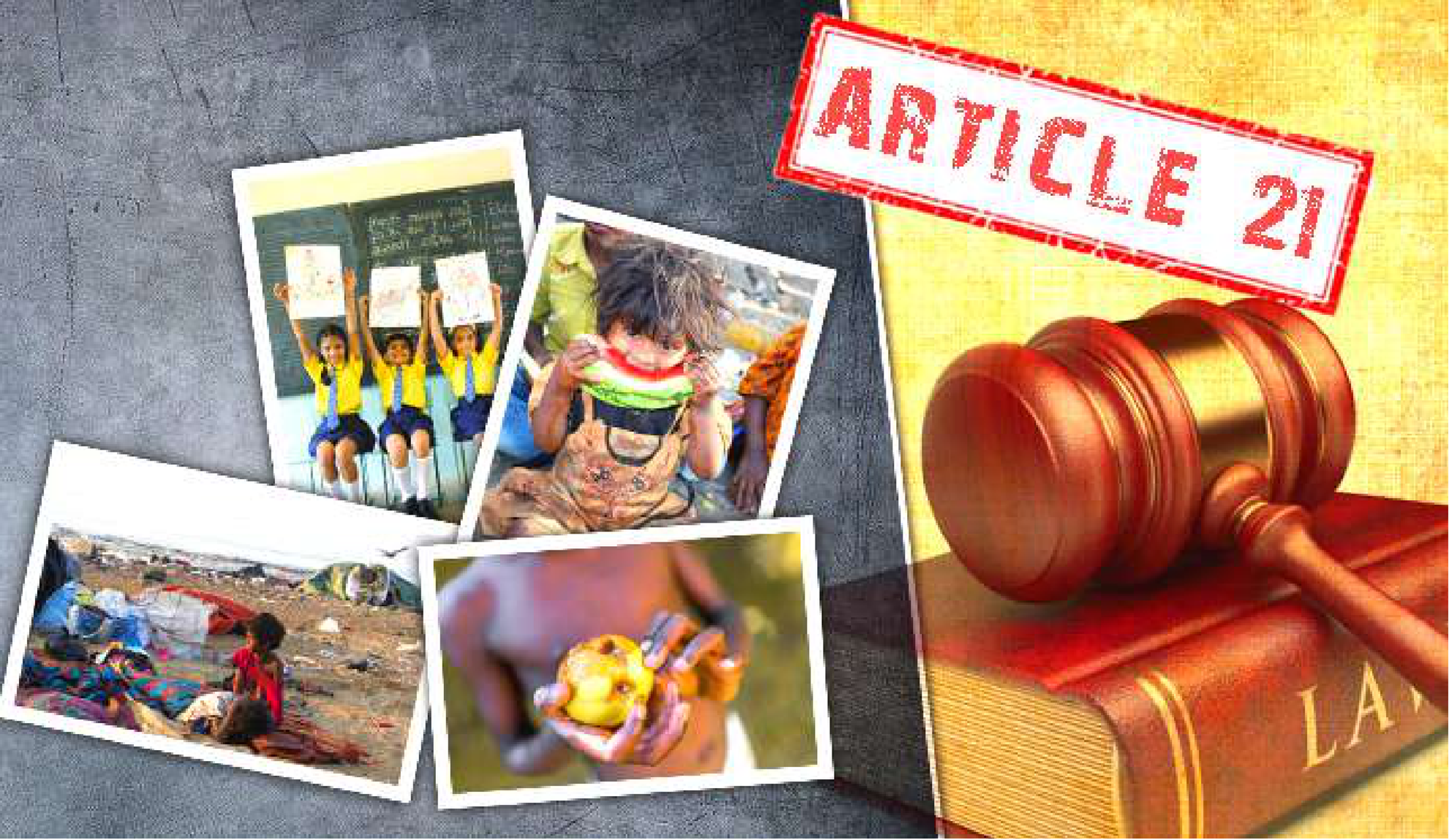
- https://loksabhadocs.nic.in/Refinput/Research_notes/English/04122019_153433_1021204140.pdf
- Ibid
- https://www.constitutionofindia.net/articles/preamble/
- https://indiankanoon.org/doc/1199182/
In the Kharak Singh v State of Uttar Pradesh case, the SC held, “by the term ‘life’ as here used, something more is meant than mere animal existence. The inhibition against its deprivation extends to all those limbs and faculties by which life is enjoyed. The provision equally prohibits the mutilation of the body by amputation of an arm or a leg, or the pulling out of an eye, or the destruction of any other organ of the body through which the soul communicates with the outer world.” In the Francis Coralie v UOI and the Olga Tellis v Bombay Municipal Corporation case, the Supreme Court held that the right to life includes the right to live with human dignity. Thus, it also includes all the bare necessities of life that make human life worth living.
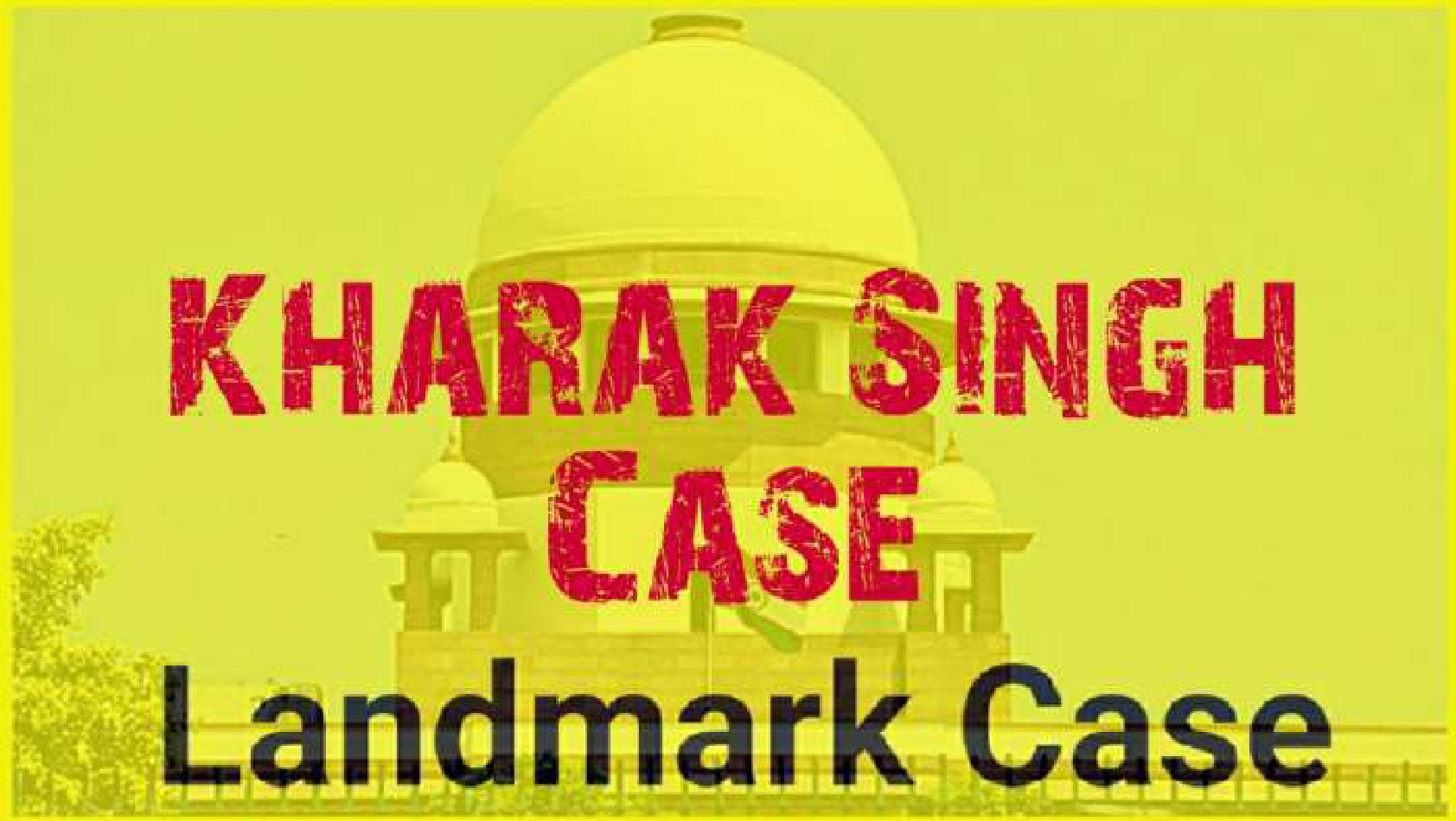
The Supreme Court of India has described article 21 as the ‘Heart of Fundamental Rights’. This right is available to every person, citizens and foreigners alike. However, it can only be claimed when a person is deprived of his ‘life or ‘personal liberty’ by the ‘State’ as defined in Article 12. Thus, violation of the right by private individuals is not under the purview of Article 21.
Article 19(1) (a) of the Constitution states that, “all citizens shall have the right to freedom of speech and expression”. The philosophy behind this Article lies in the Preamble of the Constitution which resolves to secure to all its citizen, liberty of thought and expression.
The phrase ‘freedom of speech and expression’ has a wide connotation. It means the right to speak, and the right to express oneself through any medium: by word of mouth, writing, pictures, signs, internet etc. Every citizen has a right to hold an opinion and to be able to express it, including the right to receive and impart information. It also includes the freedom to propagate ideas. According to Justice Krishna Iyer, “This freedom is essential because the censorial power lies in the people over and against the Government and not in the Government over and against the people.”
- AIR 1963 SC 1295
- 1981 AIR 746
- 1986 AIR 180
- https://loksabhadocs.nic.in/Refinput/Research_notes/English/04122019_153433_1021204140.pdf
- https://indiankanoon.org/doc/609139/
- https://indiankanoon.org/doc/1218090/
- https://www.constitutionofindia.net/articles/preamble/
- https://www.hindustantimes.com/india–news/rights–vs–restrictions–the–precarious–balance–for–free–speech–101656524643943.html
The exercise 19(1)(a) is, however, not absolute. It is subject to certain “reasonable restrictions” imposed by Article 19(2). Article 19 (2) provides the conditions under which the state has the right to restrict the freedom of speech and expression. It includes applying restrictions in the interests of the sovereignty and integrity of India, the security of the State, friendly relations with foreign States, public order, decency or morality or in relation to contempt of court, defamation or incitement to an offence.
Article 19(1)(a) also includes the freedom of the press. Romesh Thappar v. State of Madras was amongst the earliest cases to be decided by the Supreme Court in which the court had declared freedom of the press to be a part of the freedom of speech and expression. The court had observed, “Freedom of Speech and of Press lay at the foundation of all democratic organizations, for without free political discussion, no public education, so essential for the proper functioning of the process of Government, is possible.
The following are some instances of violation of liberty, specifically related to Articles 19(1)(a) and 21.
The Unlawful Activities (Prevention) Amendment Act, 2019

The Unlawful Activities (Prevention) Act, 1967 (UAPA) is India’s primary anti-terrorism legislation. It was enacted in 1967, and has been amended several times since, the most recent taking place in 2019. Prior to the 2019 amendment, the UAPA provided for the notification of an organization as a terrorist organization; and it made membership in a terrorist organization as well as financing of such organizations as punishable offences. The 2019 amendment expands the scope of the term ‘terrorist’ to confer upon the central government the power to arbitrarily designate even individuals as terrorists without following any judicial process.
- https://indiankanoon.org/doc/1218090/
- Ibid
- AIR 1950 SC 124
- Ibid
- https://www.mha.gov.in/sites/default/files/A1967–37.pdf
- https://egazette.nic.in/WriteReadData/2019/210355.pdf
- Ibid
The framework under which a trial of a UAPA accused is conducted in India is already draconian. There is disregard of presumption of innocence and the reversal burden of proof, as well as the circumventing of the protections under Articles 14, 21 and 22. The incarcerations are arbitrary, where not only standard constitutional protections are overlooked, but even basic criminal procedure rules and evidentiary requirements are diluted.
According to critics, the amendment will make matters worse as no commensurate safeguards for this arbitrary power have been introduced and this will lead to conferring “discretionary, unfettered and individuals without trial. Further, the review committee to denotify individuals notified as terrorist will also be constituted by the Central Government, thereby, taking away the possibility of judicial review.
Over the past few years there have been a number of cases of misuse of the UAPA. For instance, in November 2021, the Tripura government booked 102 social media accounts under the Act, on the grounds of promoting enmity between religious groups, for publishing posts about the communal violence in Tripura. Before that, a team of lawyers who were conducting a fact-finding enquiry into the violence had also been booked under similar provisions of the law.
In October of the same year, the Jammu and Kashmir Police booked students and staff of two medical colleges under UAPA for allegedly cheering for Pakistan when it won a T20 World Cup match against India. In another case, the Assam Police had booked a person under UAPA for allegedly putting up a Facebook post that said that the Taliban in Afghanistan were not terrorists. There are several other instances of people being booked under UAPA on frivolous grounds which are not related to terrorism.
A report by PUCL puts the conviction rate under UAPA for the period of 2015 to 2020 at less than 3 per cent. The inclusion of individuals under the ambit of the UAPA has the possibility of further exacerbating the misuse of the law. It can lead to the profiling of individuals and suppressing dissent, and severely undermines the right to personal liberty under article
In 2019, two petitions, Sajal Awasthi v UOI and Association for Protection of Civil Rights v UOI, were filed in the SC challenging the 2019 amendment on grounds that it violated the right to equality, freedom of speech and the right to life (Articles 14, 19 and 21). The petitions are still pending in the court.
- https://indianexpress.com/article/india/uapa–onus–will–be–on–individual–to–prove–he–is–not–terrorist/
- https://frontline.thehindu.com/cover–story/article29618049.ece
- https://www.epw.in/engage/article/indias–unforgivable–laws
- https://www.thehindu.com/opinion/lead/jurisprudence–of–the–judicial–rubber–stamp/article29334498.ece
- https://www.newsclick.in/UAPA–amendment–gateway–misuse–anti–terror–law–critics
- https://www.jurist.org/commentary/2020/06/bhandari–pokhriyal–uapa–free–speech/
- Ibid
- Ibid
- https://scroll.in/latest/1009927/tripura–police–ask–twitter–to–suspend–68–profiles–for–posts–on–anti–muslim–violence
- https://scroll.in/latest/1009909/pucl–criticises–tripura–police–for–uapa–case–against–lawyers–who–highlighted–anti–muslim–violence
- https://scroll.in/article/1009279/what–laws–are–being–used–to–book–those–who–celebrated–pakistans–cricket–win–over–india
- https://www.livelaw.in/news–updates/doubtful–fb–post–taliban–terrorist–alone–cognizable–offence–gauhati–high–bail–uapa–accused–183441
- https://scroll.in/latest/1033009/less–than–3–arrests–under–uapa–resulted–in–conviction–between–2015–and–2020–shows–report
Internet Shutdowns by Central and State Governments
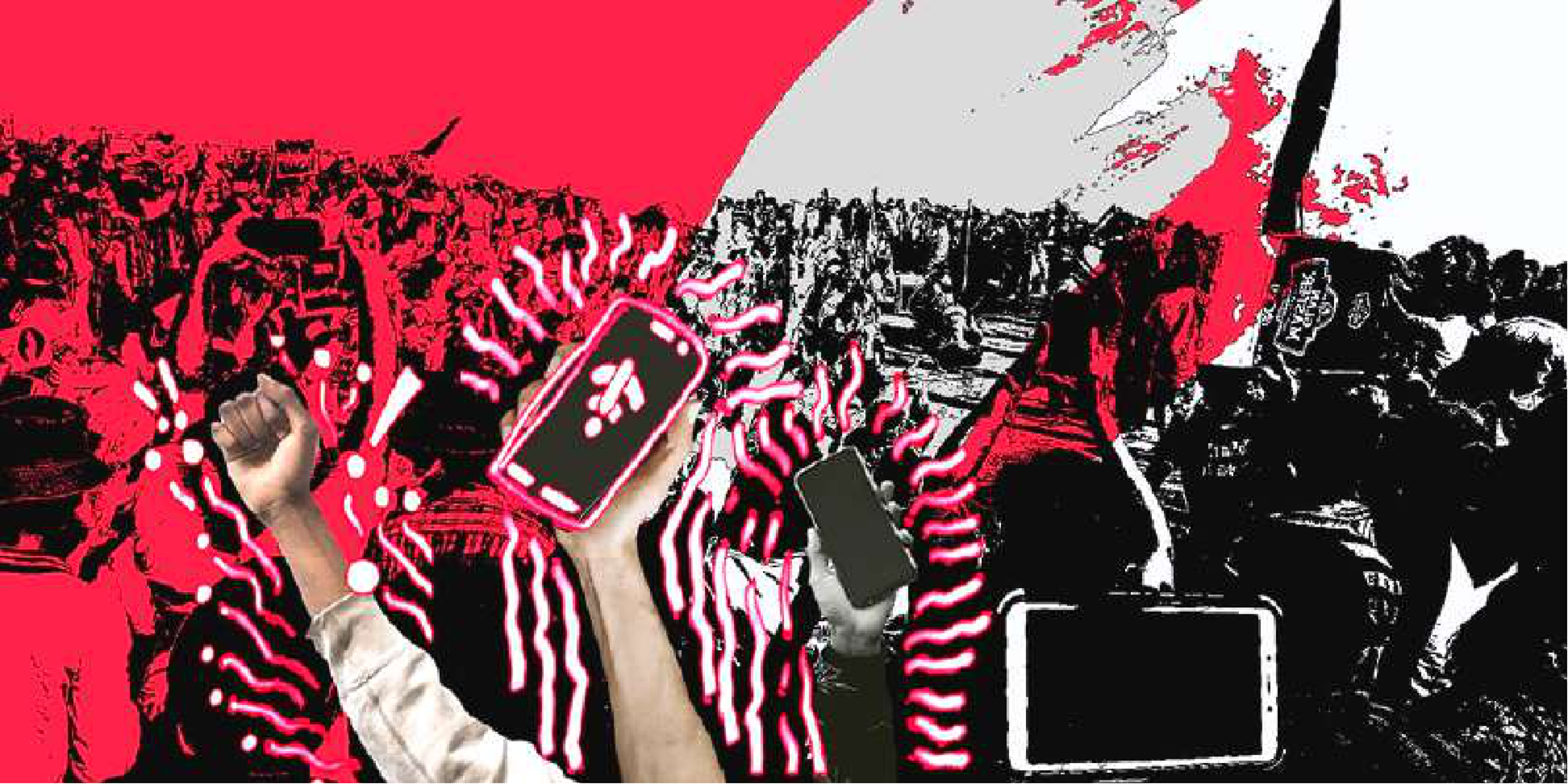
Access to the Internet is crucial for citizens to exercise their freedom of speech and expression, as well as their freedom of association, and right to peaceful assembly. Despite this, the central and state governments have frequently curbed the access to information by restricting internet access in recent times. According to a study by Access Now, in 2020 India had the highest number of internet shutdowns worldwide, amounting to 109, in contrast Yemen, in second place, experienced only six shutdowns.
Some instances of recent shutdowns include: the regular internet shutdowns imposed in Jammu and Kashmir post repeal of article 370, cited as measures for protecting national security and to suppress militant groups in Kashmir from communicating, or the internet shutdown issued in Haryana during the farmer’s protests against the BJP’s Farm laws, which was justified by citing the need to combat fake news that could incite riots and violence. While the justification given in these cases was about national security and maintenance of public order, it also led to the suppression of legitimate protests.
As per the legal framework in India, until 2017, the DM was authorized under Section 144 of the Criminal Procedure Code (CrPC) to issue an internet shutdown if he/she was of the opinion that such an order was likely to prevent, or tended to prevent, “obstruction, annoyance or injury to any person lawfully an affray.” However, once issued, no mechanism existed to review the legality of the shutdown. In 2017, new rules were issued under Section 7 of the Indian Telegraph Act, 1885.
- Poddar, Rongeet. (2019). “Constitutionality of India’s Unlawful Activities (Prevention) Amendment Bill, 2019: India’s McCarthyism Moment”. Oxford Human Rights Hub August 14 2019.
- https://www.scobserver.in/reports/sajal–awasthi–union–of–india–constitutionality–of–uapa–amendment–writ–petitions–summary/
- https://www.accessnow.org/wp–content/uploads/2021/03/KeepItOn–report–on–the–2020–data_Mar–2021_3.pdf
- https://thewire.in/government/jammu–and–kashmir–internet–shutdown–jkccs
- https://internetfreedom.in/as–the–farmers–protests–see–widespread–internet–shutdowns–iff–writes–to–the–haryana–home–ministry–urging–restraint/
- Nazak, N. (2018). The legal disconnect: An analysis of India’s Internet Shutdown Laws. IFF Working Paper No. 1/2018, 5.
- Ibid
- https://dot.gov.in/sites/default/files/Suspension%20Rules.pdf
Under the new Rules, the powers for issuing a shutdown due to a “public emergency” (defined as “the prevailing of a sudden condition or state of affairs affecting the people at large calling for immediate action”), or in the interest of “public safety” (defined as “the state or condition of freedom from danger or risk for the people at large”), were placed with each State Home Secretary in the state. In union territories, the Union Home Secretary was tasked with the job.
Emergency orders can still be issued by officers of the rank of Joint Secretary or above, but such orders must be confirmed by one of the abovementioned secretaries within 24 hours. The overall legal process has many problems. The terms under which shutdowns may be issued (“public emergency” and “public safety”) remain extremely broad and open to subjective interpretation. Further, the review committee’s meetings take place behind closed doors, and all of the committee members are part of the executive which is responsible for issuing the shutdown in the first place. Thus, the process allows a great degree of arbitrariness.
Article 19(1)(a) of the Constitution provides all citizens with the “freedom of speech and expression”, however, the freedom of speech comes with certain “reasonable restrictions”, as mentioned in article 19(2), which includes issues concerning “sovereignty”, ”security”, “public order”, amongst others. Thus, under certain extraordinary circumstances, it is acceptable for the governments to restrict the right to free speech.
However, in the case of most internet shutdowns, the presence of ambiguous terms like “public emergency” and “public safety”, has made the process extremely arbitrary, and the justification of maintenance of public safety mostly seem to be based on very vague and broad interpretations. These internet shutdowns are problematic because they restrict access to information and take away the ability of citizens to register their critique of government action. This effectively allows governments to escape accountability by safeguarding themselves from legitimate criticism and protest. Thus, arbitrary internet shutdowns undermine the core value of freedom of speech enshrined in the Constitution.

- AIR 1997 SC 568
- Ibid
- https://dot.gov.in/sites/default/files/Suspension%20Rules.pdf
- Software Freedom Law Centre, India. (2018). Living in Digital Darkness: A Handbook on Internet Shutdowns.
- Nazak, N. (2018). The legal disconnect: An analysis of India’s Internet Shutdown Laws. IFF Working Paper No. 1/2018, 14.
- https://indiankanoon.org/doc/1218090/
- https://internetfreedom.in/as–the–farmers–protests–see–widespread–internet–shutdowns–iff–writes–to–the–haryana–home–ministry–urging–restraint/
In January 2020, the Supreme Court ruled in the Anuradha Bhasin v UOI case, that freedom of speech and expression through the medium of the internet attracted protection under the Indian constitution. The Court proceeded to fill the substantive gaps in the existing legislation and laid down guidelines to limit Internet suspensions under the Telegraph Act. The Court also held that any government-imposed restriction on Internet access must be “necessary and proportionate, lawful, transitory, limited in scope, and any orders restricting Internet access are subject to judicial review
Equality
The Right to Equality is one of the Fundamental Rights enshrined in the Indian Constitution. It is principally based on the notion of equal treatment of all by the state and by law. Incorporated in Articles 14 to 18, it includes both positive (which the state must do) and negative (which the state must avoid) rights. While article 14 lays down the general principle of equality as expressed in the Preamble, articles 15-18 point to specific applications.
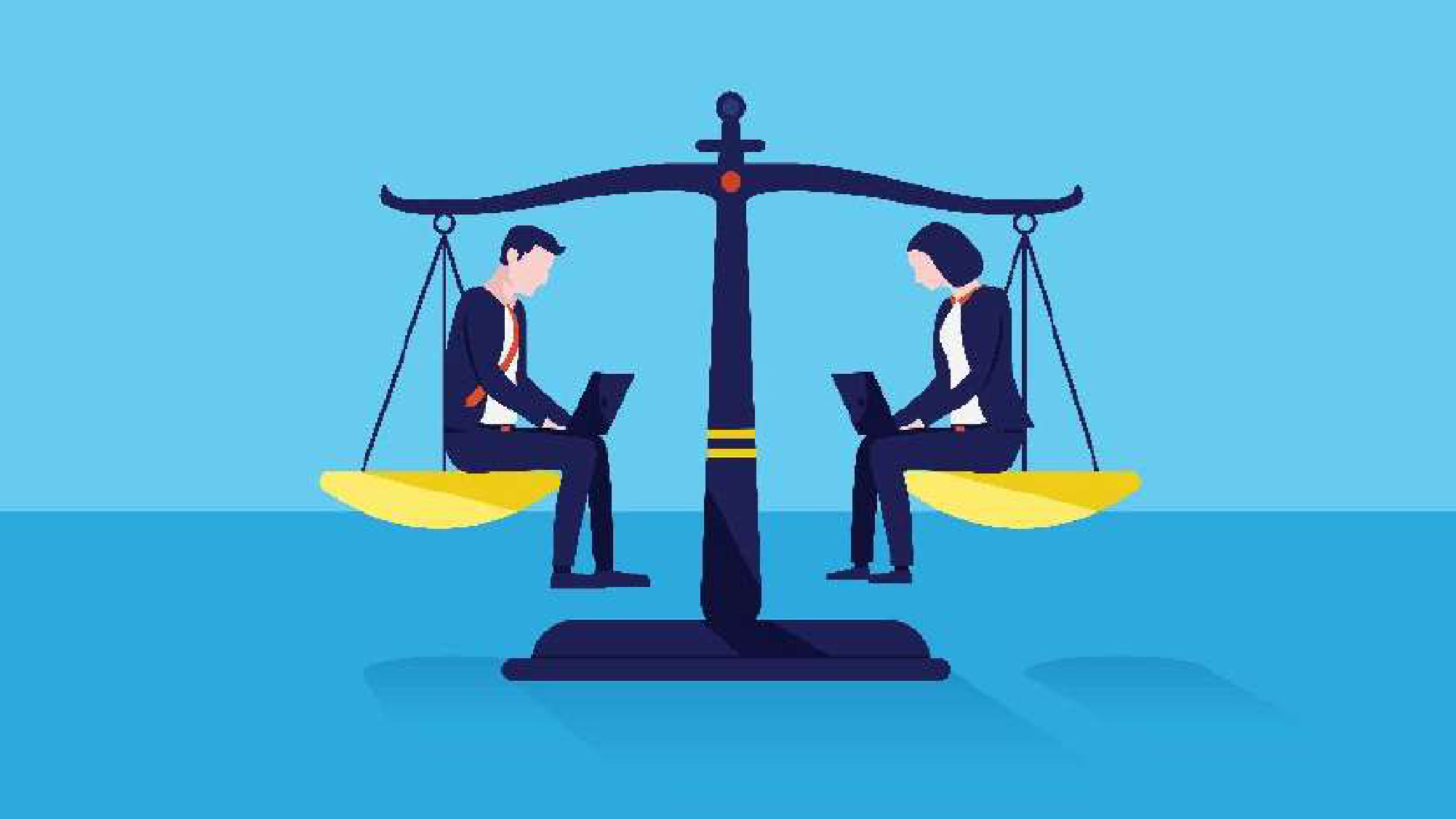
Article 14 is largely influenced by the Rule of Law, a theory pronounced and advocated by A. V. Dicey. It states that, “The State shall not deny to any person equality before the law or the equal protection of the laws within the territory of India.” The first part of the article speaks of equality before law which is commonly accepted to be a guarantee that no person is above the law. This guarantee is made effective by its corollary in the second part which offers to persons the equal protection of the laws. Thus, in the legal sense, both these guarantees are intricately woven with each other that the violation of one will inevitably lead to the violation of the other. It should be noted that the right to equality is applicable not just to citizens, but all persons within the territory of India.
- (2020) 3 SCC 637
- Ibid
- https://publications.parliament.uk/pa/ld200607/ldselect/ldconst/151/15115.htm#note174
- Article 14 of the Indian Constitution
- M P Jain, Constitutional Law of India, (5th edn, Lexis Nexis 2008) 856; Sri Srinivasa Theatre v Government of Tamil Nadu AIR 1992 SC 1004.
While the right to equality prevents class legislation by the state, in certain cases it does allow legislations to have a “reasonable classification”. This reasonable classification test has been explained by the SC in several cases. In Anwar Ali Sarkar the SC has held, “In order to pass the test, two conditions must be fulfilled, namely, (1) that the classification must be founded on an intelligible differentia which distinguishes those that are grouped together from others and (2) that that differentia must have a rational relation to the object sought to be achieved by the Act.
The differentia which is the basis of the classification and the object of the Act are distinct things and what is necessary is that there must be a nexus between them. In short, while the Article forbids class legislation in the sense of making improper discrimination by conferring privileges or imposing liabilities upon persons arbitrarily selected out of a large number of other persons similarly situated in relation to the privileges sought to be conferred or the liability proposed to be imposed, it does not forbid classification for the purpose of legislation, provided such classification is not arbitrary in the sense I have just explained.”.
In Kedar Nath Bajoria v State of West Bengal 1953, the SC held that Article 14 of the Constitution does not require that the classification brought about by legislation be “scientifically perfect or logically complete.” Article 14 does not “mean that all laws must be general in character and universal in application” or deprive the state of its “power of distinguishing and classifying persons or things for the purposes of legislation.” What was required in such cases was that the classification must be “based on an intelligible principle having a reasonable relation to the object which the legislature seeks to attain.”
While the classification test has become an established doctrine, over the years there has been recognition that this concept has limited applicability. This has led to the development of the ‘arbitrariness test’ doctrine. This was first explained by J. Bhagwati in the Royappa case where he observed, “Equality is a dynamic concept with many aspects and dimensions and it cannot be “cribbed cabined and confined” within traditional and doctrinaire limits.
From a positivistic point of view, equality is antithetic to arbitrariness. In fact equality and arbitrariness are sworn enemies; one belongs to the rule of law in a republic while the other, to the whim and caprice of an absolute monarch. Where an act is arbitrary it is implicit in it that it is unequal both according to political logic and constitutional law and is therefore violative of Art. 14.”
However, due to the lack of clarity in the application of the ‘manifest arbitrariness’ in various judgments since, its contents remain unclear and susceptible to criticism. Until the Court clearly addresses the content and meaning of ‘manifest arbitrariness’, its utility will remain unclear and subject to judicial discretion.
Articles 15-18 point to specific applications of the right to equality. Article 15 prevents discrimination on grounds of religion, race, caste, sex and place of birth.
These grounds are based upon historical injustices that have prevailed against certain groups and social classes in the country. Through these grounds, the Constitution has recognized these marginalized groups, and instated their rights against discrimination by the majority.
Also, while article 14 only deals with discrimination by the state, article 15 also addresses discrimination by private actors. Article 15(2) prohibits discrimination against anyone on the aforementioned grounds in accessing public places or using public facilities. In a landmark judgment in IMA v Union of India, the SC clarified that 15(2) also extends to private action. Article 16 grants equal opportunity in public employment and prohibits discrimination on the aforementioned grounds. It also enables the state to make provisions for reservations of “backward classes” as recognized by the state. Article 17 abolishes untouchability and article 18 abolishes the use of non-military and non-academic titles.
Some instances of violation of the right to equality:
The Citizenship (Amendment) Act, 2019
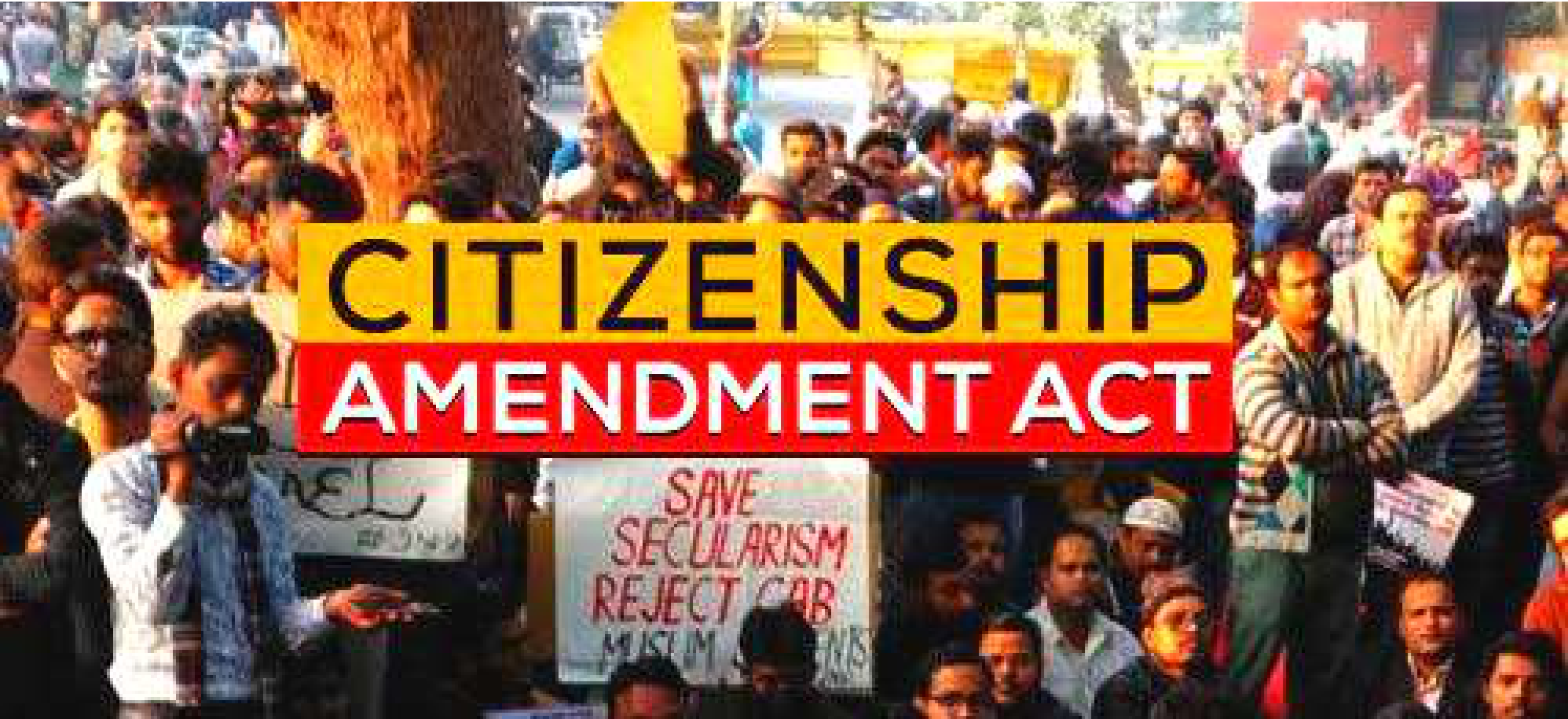
The controversial Citizenship (Amendment) Act, 2019 (CAA) was enacted in the month of December 2019 amidst widespread protests across the nation. The Act seeks to fast-track the citizenship of certain groups persecuted on the grounds of religion, by relaxing the residence requirement in India, for citizenship by naturalization. Outside of the CAA a person who applies for citizenship by naturalization has to be resident in India for a twelve-month period prior to the date of application. Additionally, he has to be resident in India for a total period of eleven years out of the fourteen years prior to the said twelve- month period. However, the CAA reduces the eleven-year residence requirement to five years..
- Transformative Constitutionalism, Constitutional Morality and Equality: The Indian Supreme Court on Section 377. In: Verfassung und Recht in Übersee VRÜ (2018)
- Kannabiran, K. (2012). Tools of Justice: Non-discrimination and the Indian Constitution (1st ed.). Routledge India.
- Article 15(2) of the Indian Constitution
- (2011) 7 SCC 179
- Article 16 of the Indian Constitution
- Article 17 and 18 of the Indian Constitution
- https://www.business–standard.com/about/what–is–citizenship–bill
- The Citizenship Act, 1955
- Ibid
The six minority groups that have been included in the CAA are Hindus, Jains, Sikhs, Buddhists, Christians and Parsis from the countries of Pakistan, Bangladesh and Afghanistan. However, other religious communities such as Jews, Muslim minorities like Shias or Ahmadiyas, even atheists or agnostics, who may have been persecuted on grounds of religion, in these countries, have been excluded.
Further, the Act has also excluded religious asylum seekers from other countries, e.g., the Rohingyas from Myanmar. Apart from the country of origin and the religious denomination, another important requirement to be included in the CAA is the date of arrival in India. Only those asylum seekers who have arrived in the country before 31st December 2014 have been included in the Act, thereby, excluding anyone arriving after that date.
The passage of this Act led to a significant number of protests across the nation. The main concern of the critics was that by excluding certain religious denominations the Act discriminates on the basis of religion, and therefore violates Articles 14 and 15 of the Constitution, and undermines the principle of secularism.
To assess whether the argument is valid or not one needs to look into the concept of permissible classification under Article 14 as explained by the SC. In the case of Re Special Courts Bill, 1978, the SC has held that in order to pass the test of permissible classification, two conditions must be fulfilled: First, the classification must be founded on intelligible differentia which distinguishes persons or things that are grouped together from others left out of the group; and second, the differentia must have a rational relation to the object sought to be achieved by the statute in question i.e. there must be a nexus between the basis of the classification and the ultimate objective of the statute in consideration.
It has further held in S. Seshachalam v. Bar Council of Tamil Nadu, that if any legislation is found to be arbitrary in nature, the classification done for the purpose of such legislation ought to be considered discriminatory. Another important judgment in this regard is that of Chief Justice Patanjali Shastri in Kedar Nath Bajoria v State of West Bengal 1953, where he held that Article 14 of the Constitution does not require that the classification brought about by legislation be “scientifically perfect or logically complete”.
Article 14 does not “mean that all laws must be general in character and universal in application” or deprive the state of its “power of distinguishing and classifying persons or things for the purposes of legislation.” What was required in such cases, he wrote, was that the classification must be “based on an intelligible principle having a reasonable relation to the object which the legislature seeks to attain.”
- The Citizenship (Amendment) Act, 2019
- Ibid
- bid
- https://www.indiatoday.in/india/story/at–delhi–s–shaheen–bagh–anti–caa–protesters–ring–in–new–year–with–national–anthem–1633004–2020–01–01
- AIR 1979 SC 478
- CIVIL APPEAL NO.11460 OF 2014
- AIR 1953 SC 404
- Ibid
Thus, it follows from the above judgments that one needs to first identify the main object that is sought to be achieved by the Act and then link it to the proposed classification to see if there is a legitimate nexus between the object and the classification i.e. whether the classification created is based on an intelligible principle having a reasonable relationship to the object or not. And if not, then the classification can be deemed to be arbitrary, and therefore, the Act can be said to be discriminating on the basis of religion and undermining secularism.
Now, the object of the Act, as mentioned above, is to reduce the residence requirement in India for the purpose of citizenship through naturalization from 11 to 5 years i.e. it seeks to essentially fast-track the route to citizenship through naturalization. And, the class of people that this fast-tracking is applicable to are, as mentioned above, the 6 minority groups (Hindus, Jains, Sikhs, Buddhists, Christians and Parsis) from the three countries (Pakistan, Bangladesh and Afghanistan) who have arrived in India before 31st December, 2014. And this classification is being created out the larger group of all asylum seekers who have arrived in India before 31st December 2014.
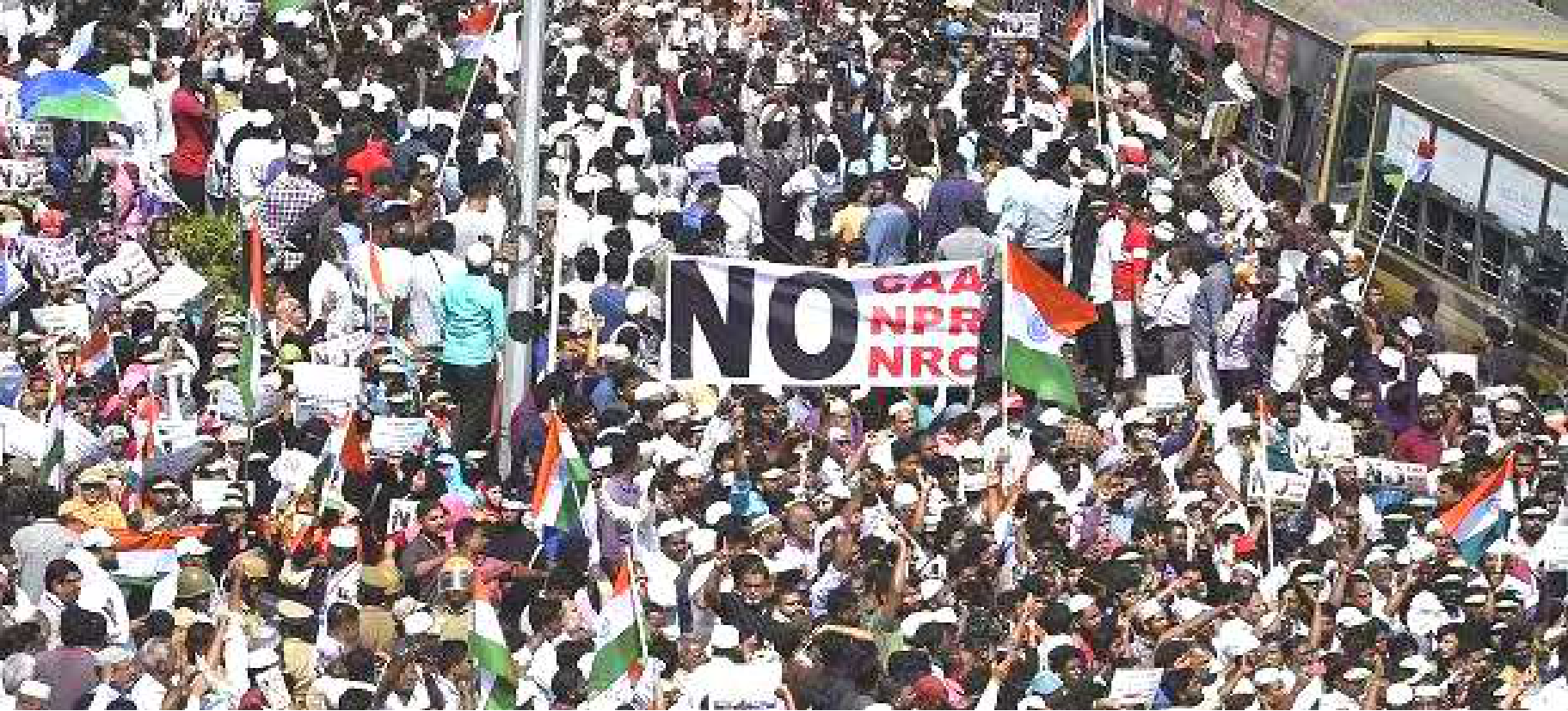
Thus, in order for this classification to be deemed reasonable it needs to be established that the group that has been included, have a need to have their citizenship fast-tracked, over and above the ones that have been excluded.
Since, there is no intelligible reason to assume that categories that have been included, have a need for their citizenship fast-tracked, any more than the categories that have been excluded (such as the Jews, atheists, agnostics, Shias, and Ahmadiyas of the three countries, or the asylum seekers from other countries such as Rohingyas from Myanmar) who may have also faced religious persecution, therefore, one can say that the exclusion of these categories bears no rational nexus with the object.
Thus, the classification appears to be arbitrary. Hence, the Act can be said to be violating Article 14 of the constitution, by discriminating against certain asylum seekers, based on their religion, and therefore undermining secularism.
In addition to citizens’ protests, the CAA was challenged legally almost immediately after it was passed. The first challenge came from the Indian Union Muslim League (IUML), and there are now 143 petitions questioning the Act’s constitutionality before the Supreme Court.
The petitions, and critics of the law more widely, have argued that the CAA goes against India’s secular nature, which is enshrined in the Constitution, and Article 14 (equality before law). Even Michelle Bachelet, the United Nations high commissioner for human rights, has filed an intervening application against the law before the Supreme Court.
Reservations for Economically Weaker Sections exclude EWS SCs. STs and OBCs.
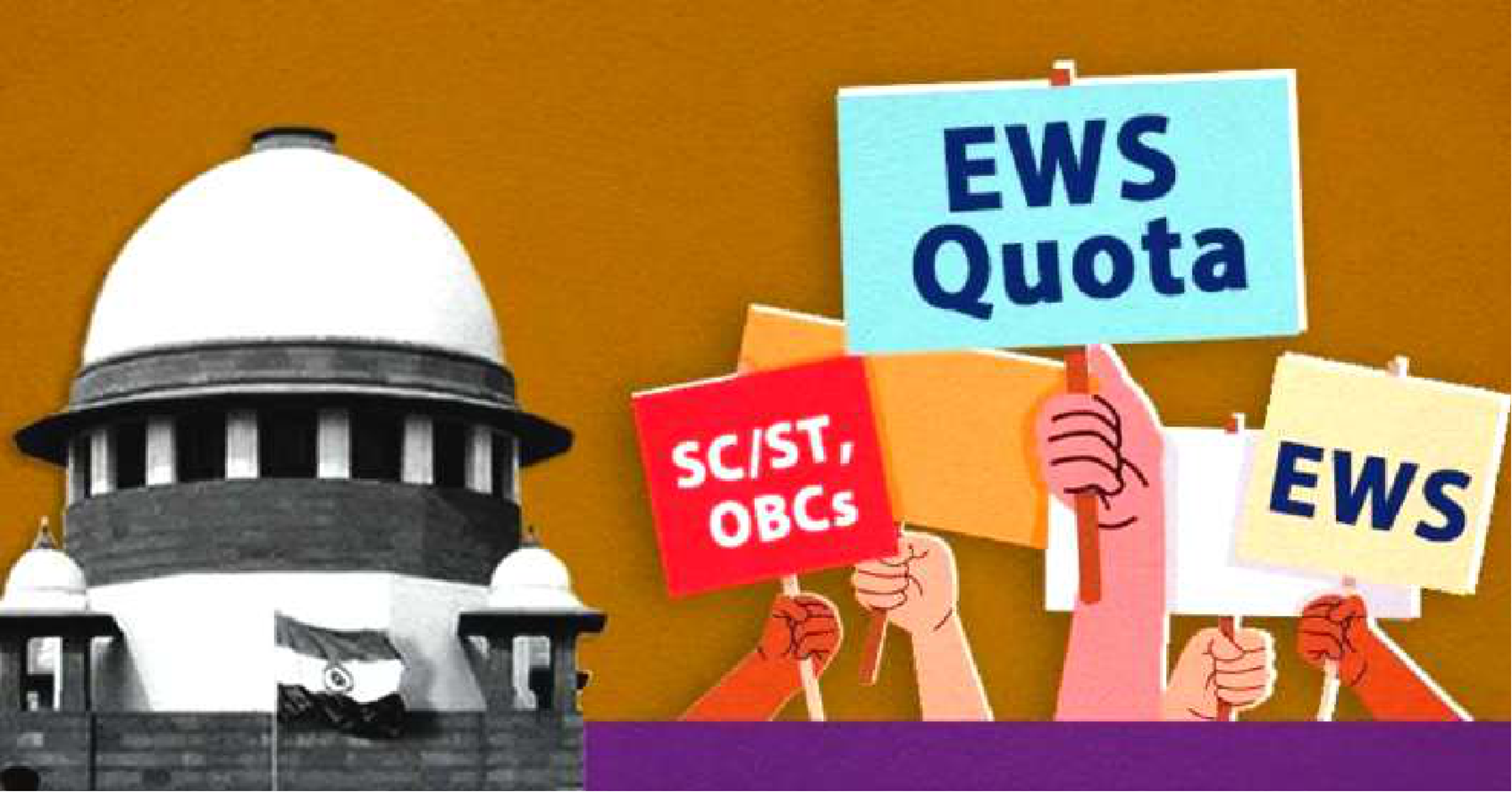
The Constitution (One Hundred and Third Amendment) Act, 2019 allows States to make reservations in educational institutions and in matters of public employment on the basis of economic criteria alone. All five Judges agreed that the Constitution permits reservations based solely economic criteria, but disagreed on who can avail EWS reservations and how many seats may be reserved.
Justices Dinesh Maheshwari, Bela Trivedi and J.B. Pardiwala upheld the Amendment in its entirety in separate concurring opinions. They stated that the economic criteria for reservations are constitutionally valid.
Justice Maheshwari explained that reservations are an affirmative action measure to counter not just social and educational backwardness, but all sorts of disadvantages. All three Judges found that SC/ST and OBC citizens can be excluded from the scope of EWS reservations. Justice Trivedi noted that EWS is a category of disadvantage of its own. ‘Just as equals cannot be treated unequally, unequals cannot be treated equally’, she clarified.
The majority further found that 10% EWS reservation in excess of the existing 50% limit on reservations, as set out in Indra Sawhney (1992), is constitutional.
All three Judges held that the 50% limit is flexible—it may be breached in extraordinary situations. More importantly, they found that the 50% limit applies only to reservations for socially and educationally backward classes, not to all types of reservations.
- https://thewire.in/law/constitution–day–court–challenges–basic–rights#:~:text=Petitioners%20argue%20that%20the%20law,the%20UAPA%20%E2%80%93%20only%202.19%25.
- https://www.scobserver.in/reports/ews–reservation–judgment–sc–upholds–103rd–amendment–in–3–2–split– verdict/#:~:text=Justice%20Bhat%20held%20that%20the,basic%20structure%20of%20the%20Constitution.
On the other hand, Justice Ravindra Bhat, writing for himself and Chief Justice U.U. Lalit, found the concept of EWS reservation itself permissible, but held that the Amendment is unconstitutional. Expressing his dissent, he stated that ‘this court has for the first time in several decades of the republic avowed an expressly discriminatory principle…the Amendment’s language of exclusion undermines…the fabric of social justice and the basic structure of the Constitution’.
Justice Bhat held that the exclusion of SC/STs and OBCs from EWS reservations violates the basic structure of the Constitution. Referring to the Major Sinho Commission report (2010), he stated that a bulk of the economically disadvantaged sections of India belong to the backward classes. It is ‘delusional’, he said, to presume that these socially and educationally depressed classes have an advantage for the forward caste poor only because they have caste-based reservation benefits.
Justices Bhat and Lalit further found that the Amendment is unconstitutional because it allows the government to exceed the 50% limit on reservations, as established in Indra Sawhney. Justice Bhat held that allowing EWS reservations to exceed this limit will become a gateway for further breaches, leading to ‘compartmentalisation’.
Fraternity
The word fraternity is derived from French to mean brotherhood, friendship, community and cooperation. It is both a way of feeling and a political principle. The word is indicative of a common bond or a feeling of unity between people or communities and is linked to the idea of social solidarity. In order to fulfill the value of fraternity in society there needs to be empathy and the realisation that people who look different, have different cultures, follow different religions, speak different languages ultimately have the same intrinsic value as a human being. Thus, an acceptance of differences is the basic foundation of fraternity.

While drafting India’s Constitution Dr. Ambedkar had laid great stress on fraternity. He stated, “Fraternity means a sense of common brotherhood of all Indians—if Indians are seen as being one people. It is the principle which gives unity and solidarity to social life.” He further asserted that the principles of Liberty, Equality and Fraternity are to be treated as a trinity and not as separate, mutually exclusive items. He said, “They form a union of trinity in the sense that to divorce one from the other is to defeat the very purpose of democracy.
Liberty cannot be divorced from equality, equality cannot be divorced from liberty. Nor can liberty and equality be divorced from fraternity. Without equality, liberty would produce the supremacy of the few over the many. Equality without liberty would kill individual initiative. Without fraternity, liberty would produce the supremacy of the few over the many. Equality without liberty would kill individual initiative. Without fraternity, liberty and equality could not become a natural course of things. It would require a constable to enforce them.”
While submitting the Draft Constitution to the President of the Constituent Assembly, on 21 February 1948, B R Ambedkar wrote that the drafting committee had added a clause on fraternity in the Preamble, even though it was not part of the Objective Resolution, because of the great need of fraternity and goodwill in the country at the time. On October 17, 1949, while discussing the Preamble, JB Kripalani had applauded the inclusion and said, “Again I come to the great doctrine of fraternity, which is allied with democracy. It means that we are sons of the same God, as the religious would say, but as the mystic would say, that there is one life pulsating through us all, or as the Holy Bible says, ‘We are one of another’. There can be no fraternity without this.
The Constitution views fraternity as a way to affirm the “dignity of the individual” and the “unity of the nation”. Dignity of the individual is assured by recognising the equality of individuals and a sense of mutual respect despite difference. The idea of the unity of the nation comes from a sense of mutual belonging that transcends all differences between the people.
Over the years the Supreme Court has understood fraternity in a very broad sense. In the Prathvi Raj Chauhan vs Union of India case, addressing the SC/ST (Prevention of Atrocities) Act, the court observed that, “Fraternity assured by the Preamble is not merely a declaration of a ritual handshake or cordiality between communities that are diverse and have occupied different spaces: It is far more.” Justice Ravindra Bhat observed that “fraternity holds a crucial a place in the scheme of our nation’s consciousness and polity”.
While evaluating the constitutional validity of the appointment of locals as special police officers (Salwa Judum) in Maoist-hit regions of Chhattisgarh in the Nandini Sundar vs State of Chhattisgarh case, the SC stressed on the importance of fraternity.
- Rowena Robinson, In Search of Fraternity Constitutional Law and the Context of Housing Discrimination in India, 26&27 Economic & Political Weekly 56(June 27, 2015).
- https://prasarbharati.gov.in/whatsnew/whatsnew_653363.pdf
- https://www.deccanherald.com/opinion/comment/what–happened–to–fraternity–1089817.html
- https://eparlib.nic.in/bitstream/123456789/763271/1/cad_17–10–1949.pdf
- https://www.constitutionofindia.net/articles/preamble/
- http://docs.manupatra.in/newsline/articles/Upload/1A226E6F–4443–472F–9E7E–CB70EA7C3744.pdf
- Ibid
- 2020 SCC OnLine SC 159
It stated that, “our Constitution posits that unless we secure … conditions of social, economic and political justice for all who live in India, we would not have achieved human dignity for our citizens, nor would we be able to promote fraternity among groups of them. Policies that run counter to that essential truth destroy national unity and integrity.” It further said that, “the Constitution casts a positive obligation on the State secure conditions where dignity of its citizens is protected to enable all to live in conditions of fraternity. Fraternity not only acts as the binding element between unity and equality, it gives birth to new rights which facilitate the constitutional goal of an egalitarian society…”
The above discussion makes it clear that fraternity is one of the most fundamental values of the Constitution. However, in spite of its significance there have been many instances where the idea of fraternity has been undermined. Some of these instances are given below.
Lack of Action against Hate Speech
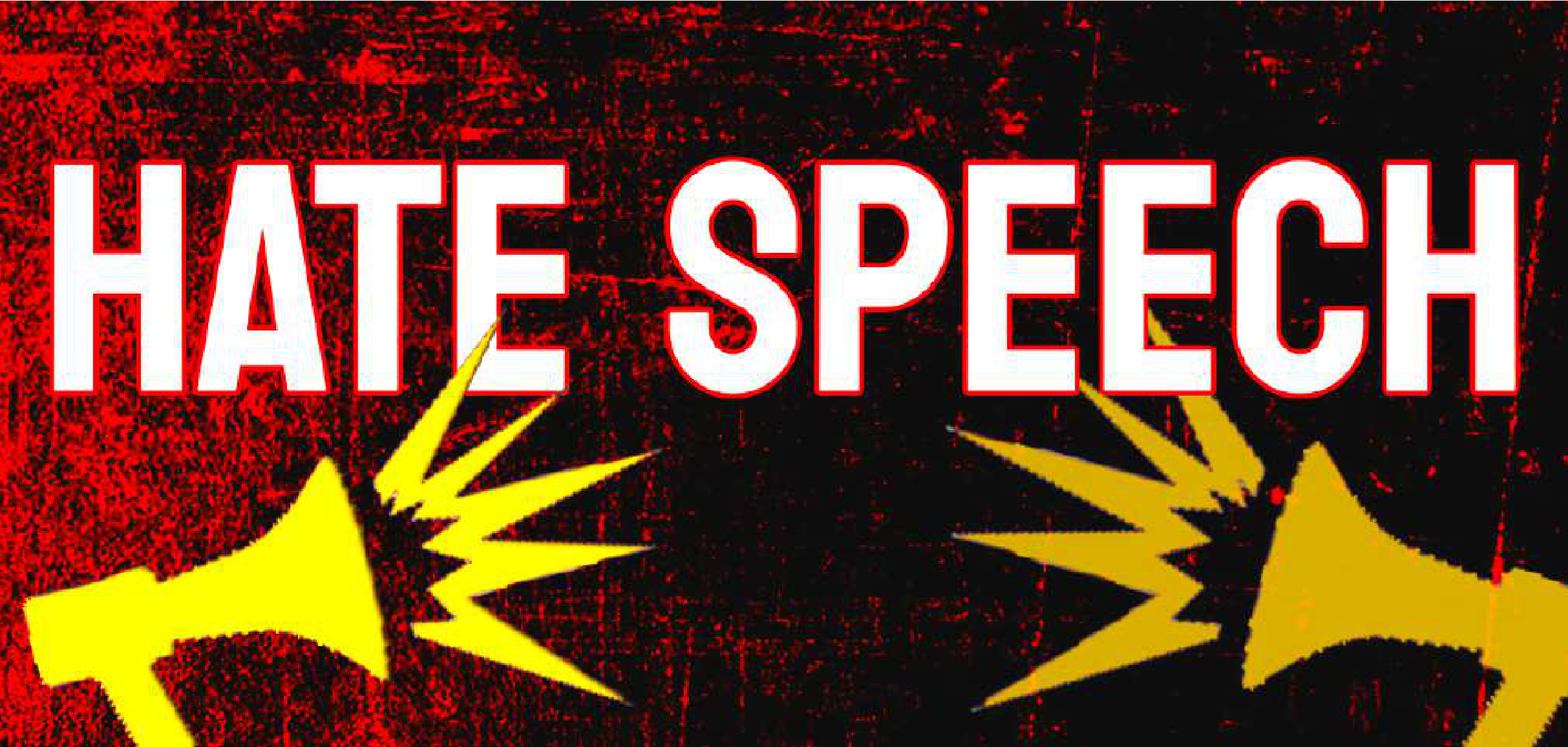
A three day ‘Dharam Sansad’ (religious conference) was held in Haridwar between December 17 and December 19, 2021 where several speakers gave incendiary speeches that, among other things, called for violence against members of the minority community. The event was organized by Yati Narasighanand and Hindu Yuva Vahini. In a video shared widely on social media, speakers were heard espousing a hardline, fundamentalist and exclusionist ideology, with some even calling for genocide. Following these open calls for targeted violence, some incidents of violence did take place clearly, influenced by this unchecked hate speech.
A three day ‘Dharam Sansad’ (religious conference) was held in Haridwar between December 17 and December 19, 2021 where several speakers gave incendiary speeches that, among other things, called for violence against members of the minority community. The event was organized by Yati Narasighanand and Hindu Yuva Vahini. In a video shared widely on social media, speakers were heard espousing a hardline, fundamentalist and exclusionist ideology, with some even calling for genocide. Following these open calls for targeted violence, some incidents of violence did take place clearly, influenced by this unchecked hate speech.
- (2011) 7 SCC 547
- https://www.dnaindia.com/india/report–haridwar–hate–speech–row–how–event–unfolded–complete–timeline–yati–narasighanand–dharam–sansad–sc–plea–hearing–292804
- Ibid
- https://www.indiatoday.in/india/story/haridwar–dharma–sansad–hate–speech–fir–1894929–2022–01–01
- https://cjp.org.in/cjp–urges–dgp–for–arrests–of–accused–in–dharam–sansad–case/
In response to this event the Uttarakhand Police initially filed an FIR. However, the case saw very slow progress with only two sections of the Indian Penal Code invoked in the FIR. Despite the videos showing these speakers giving hateful speeches, which should have been considered serious evidence to cause an arrest in a cognizable offence, the police was extremely lackadaisical in taking any action. Instead, an official of the Uttarakhand Police was seen in the company of the offenders, with Yati Narsinghanand claiming that the officer is “on our side”. It was only after several days and pressure from the social media that certain arrests were made.
On December 19, 2021, a similar ‘Dharam Sansad’ was organised in Govindpuri, Delhi, which also included hate speech against the minority community. However, at a later date the Delhi Police had filed an affidavit in the court claiming no hate speech had occurred during the event.
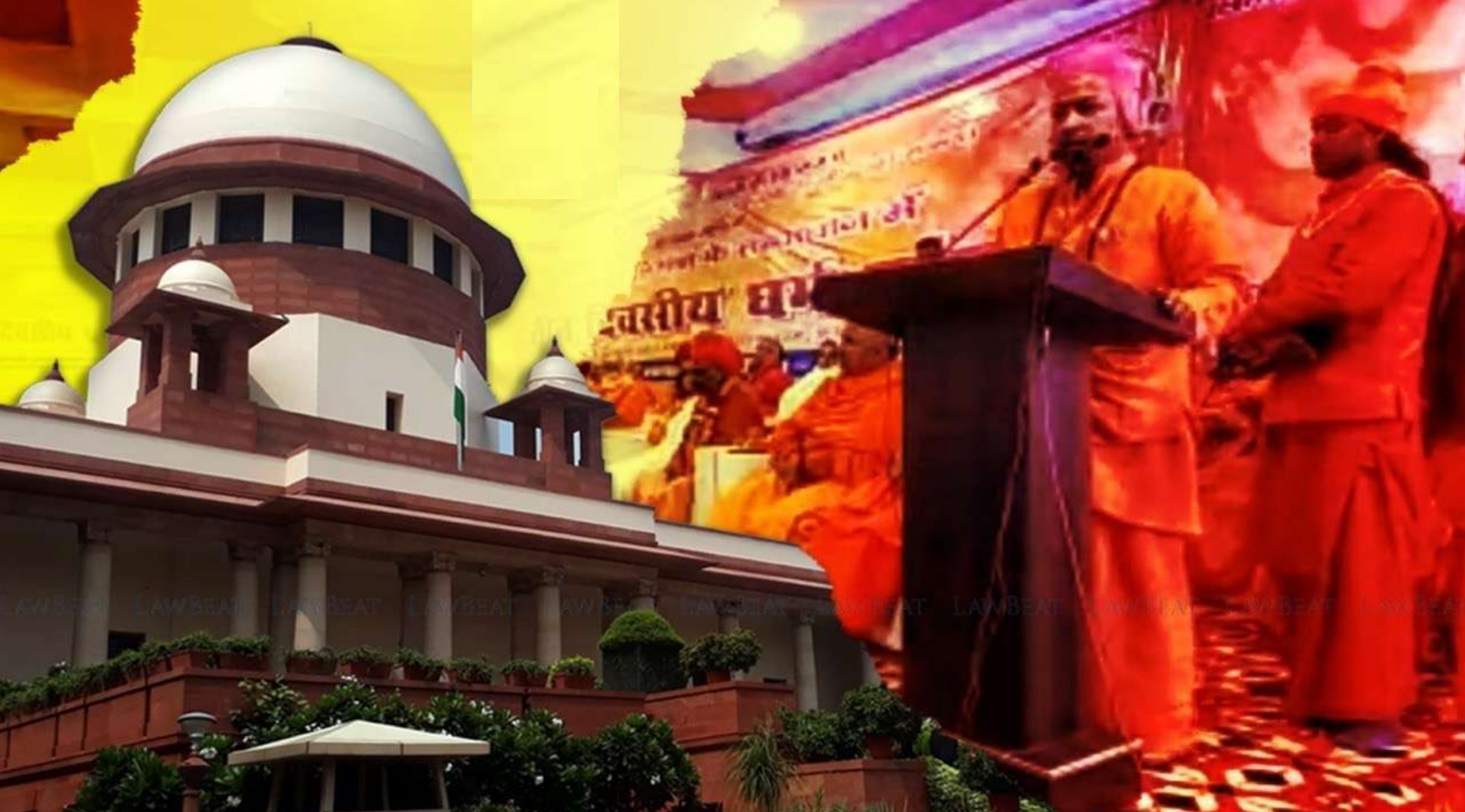
On a similar note, on February 5, 2022, an event was organised by the supporters of Dhirendra Shastri at the Jantar Mantar in Delhi, which also escalated into calls for violence against the minority community. After the video of the hate speech went viral on social media, the Delhi police gave a notice to the Twitter handle ‘Molitics’ which had reported on the event.
The Delhi police found Molitics’ post on Twitter to be “offensive, malicious and inciting message which can adversely affect law and order”. However, at the time no action was taken against the speakers who were in the video.
- https://www.indiatoday.in/india/story/haridwar–dharma–sansad–hate–speech–fir–1894929–2022–01–01
- https://scroll.in/video/1013862/haridwar–hate–speech–case–hindutva–leaders–police–officer–laugh–about–being–unbiased
- https://www.indiatoday.in/india/story/haridwar–dharma–sansad–hate–speech–fir–1894929–2022–01–01
- https://www.thequint.com/news/india/by–inaction–on–hate–speech–events–delhi–police–enabling–more–of–them
- https://www.indiatoday.in/india/delhi/story/no–hate–speech–delivered–delhi–dharam–sansad–police–tell–sc–1937253–2022–04–14
- https://thewire.in/communalism/violent–anti–minority–speeches–in–delhi–but–police–takes–action–on–twitter–account–not–speakers
Noting that no palpable progress had been made by the Delhi Police in the case of hate speeches at the December 2021 ‘Dharm Sansad’, the Supreme Court on 13 January, 2023, in response to a contempt petition, had ordered the Delhi Police to respond in two weeks. A Bench led by Chief Justice of India DY Chandrachud had pointed out that the incident took place in December, 2021 and the FIR was lodged on May 4, 2022. The court stated, “There is no palpable progress made in the investigation……..Why do you need five months for lodging an FIR? How many arrests have been made?” The Bench also asked Additional Solicitor General KM Nataraj to file an affidavit of the Investigating Officer of the Delhi Police in two weeks giving details of the progress made in the probe.
The contempt petition was filed by activist Tushar Gandhi against the police chief of Delhi and Uttarakhand for their alleged inaction in the cases in violation of the top court’s directions in the Tehseen Poonawala case in which it had laid down guidelines with regard to action needed to be taken in cases of hate crimes/mob lynchings. However, the SC had dropped the Uttarakhand Government and the state police chief from the list of contemnors on November 11, 2022.
These incidents of hate speech and the lackadaisical approach taken by the police are a serious threat to fraternity in the country. In order to curb hate speech it is important to create a deterrence, and for that the police need to be made accountable to take immediate action in case of any such future incidents. Otherwise, a lack of action by the police can end up being seen by these hate mongers as a tacit approval by the government, and may further encourage them.
Non action by the Executive in Manipur
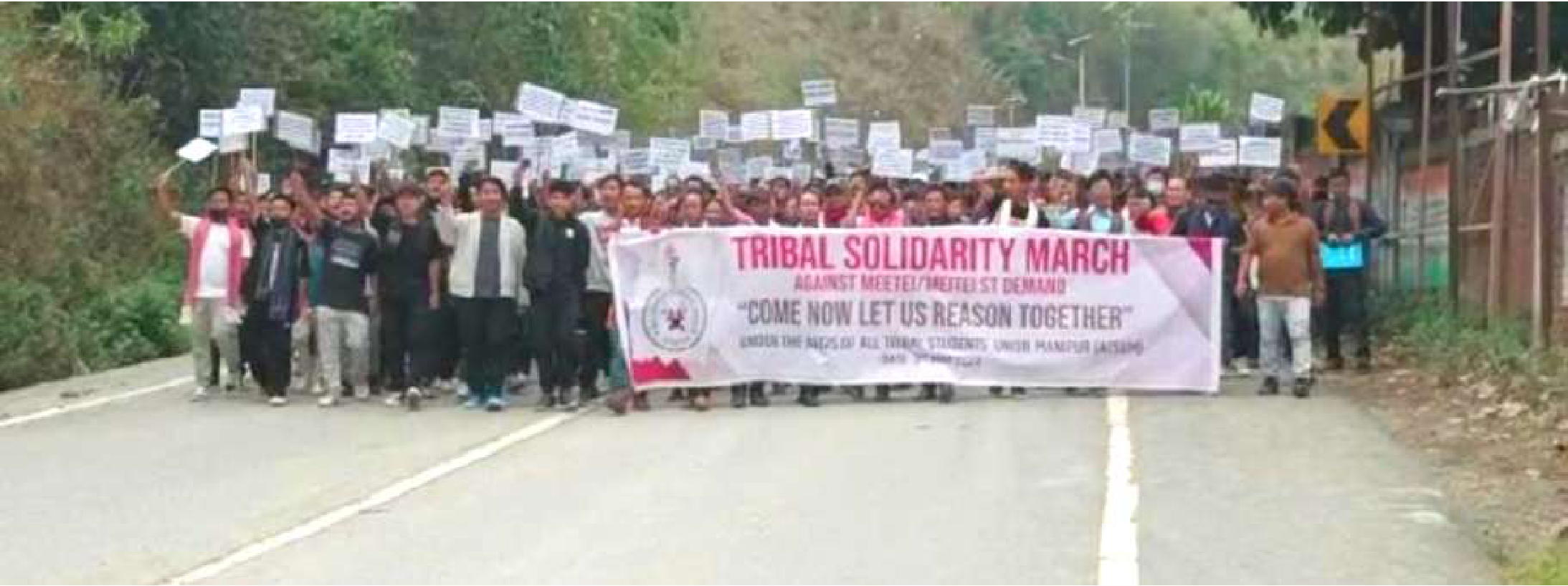
Violent clashes broke out in the state of Manipur after a ‘Tribal Solidarity March’ was organised in the 10 hill districts on May 3, 2023 to protest against the Meitei community’s demand for Scheduled Tribe (ST) status. The violence soon spiraled into a serious ethnic clash, and within a month the death toll rose to 98 with over 300 injured.
- https://www.thequint.com/news/law/5–months–to–file–fir–for–yuva–vahini–hate–speech–why–sc–asks–delhi–police
- https://www.livelaw.in/top–stories/supreme–court–dharma–sansad–hate–speech–cases–contempt–plea–213908
- https://indianexpress.com/article/north–east–india/manipur/curfew–internet–curbs–after–manipur–protest–against–meiteis–st–tag–demand–turns–violent–8590104/
- https://indianexpress.com/article/north–east–india/manipur/manipur–violence–death–toll–injured– 8643494/#:~:text=A%20month%20into%20the%20Manipur,cases%20of%20arson%20at%204%2C014.
The escalation in violence in Manipur has its roots in a 10+ year old demand by the Meitei community for Scheduled Tribe status, however, the immediate reason for this violence was a Manipur High Court order directing the state government to recommend to the Union Tribal Affairs Ministry to approve the ST status.
Even after more six months have passed since violence first broke out, the situation on the ground continues to be tense. The state government is failing to control the situation. And even the visit of union Home Minister Amit Shah has failed to bring any solution.
Recently over hundreds of people from tribal groups gathered at the Jantar Mantar to protest against the local BJP government in the state. However, at the same time, the protestors urged the Union government led by the BJP to intervene in the matter and establish peace. Their main demand is President’s Rule in Manipur as the state government has allegedly failed to maintain peace among the tribal and non-tribal communities. Citing biases in the State administration and security forces (who belong to the various communities of Manipur), several organisations have also demanded the imposition of President’s Rule.
Violation of Democratic Institutions
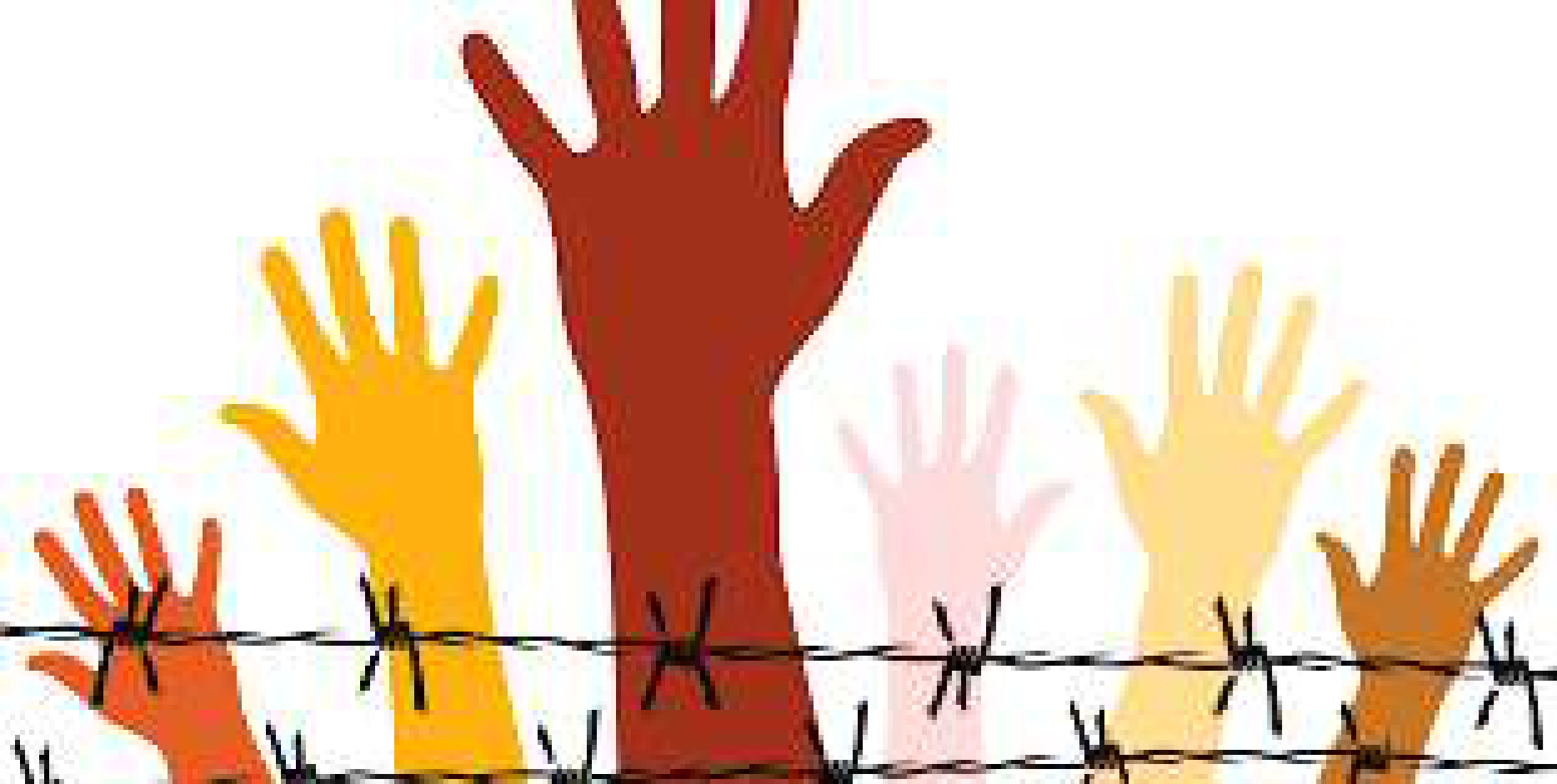
Following the British Westminster model, India developed its parliamentary form of government which has three branches: the Legislature, the Executive and the Judiciary.
Since the Executive branch of government has a significant amount of power, the Indian Constitution envisages a division of powers and a system of checks and balances. The purpose of checks and balances is to prevent the arbitrary and capricious use of power.
- https://www.thehindu.com/news/national/other–states/manipur–high–court–directs–state–to–consider–inclusion–of–meitei–community–in–scheduled–tribes–
- https://timesofindia.indiatimes.com/india/after–50–days–of–manipur–violence–is–there–a–plan–for–peace/articleshow/101184033.cms?from=mdr
- https://economictimes.indiatimes.com/news/politics–and–nation/congress–asks–why–amit–shah–visit–failed–to–calm–down–manipur–seeks–pms–trip/articleshow/100946750.cms
- https://www.thehindu.com/news/cities/Delhi/at–jantar–mantar–protest–kuki–zomi–women–seek–presidents–rule–in–manipur/article66909220.ece#:~:text=Amid%20fresh%20violence%20in%20Manipur,an%20immediate%20measure%20to%20control
The distribution of power is based on the doctrine of separation of powers where the emphasis is on the mutual exclusiveness of the three organs of the government. While the Constitution does not advocate a rigid separation of powers in India, there is an emphasis on ensuring an effective balance of powers between the organs of the government. Some of the provisions of the Constitution that provide for a separation of functions between the three organs of Government are:
- Article 50 directs the State to take steps to separate the judiciary from the executive. Articles 74 and 163 restrict the courts from inquiring into the advice tendered by the Council of Ministers to the President and the Governor.
- Articles 122 and 212 restrict the courts from questioning the validity of proceedings in the Parliament and the Legislatures.
- Articles 121 and 211 restrict the Parliament and the State Legislature from discussing the Judicial conduct of a judge of the Supreme Court and the High Courts unless the resolution of removal of the judge is under consideration.
- Article 361 provides immunity to the President or the Governor from being answerable to any court for the exercise and performance of the powers and duties of his office.
Article 246 of the Indian constitution provides for a threefold distribution of legislative powers between Union and the State Governments based on subject matter. The article provides that:
- The Parliament has exclusive power to make laws with respect to any of the matters enumerated in List I of the Seventh Schedule (the Union List).
- The Parliament and the Legislature of any State has power to make laws with respect to any of the matters enumerated in List III in the Seventh Schedule (the Concurrent List).
- The Legislature of any State has exclusive power to make laws with respect to any of the matters enumerated in List II in the Seventh Schedule (the State List).
- The Parliament also has power to make laws with respect to any matter for any territory of India not included in a State, including the matters enumerated in the State List.
- The provisions of Article 246 are to be read with the entries in the Union List, State List and the Concurrent List in Schedule VII of the Indian Constitution.
Thus, the Constitution of India prevents the possibility of arbitrariness and tyranny by providing for functional separation of powers between the three organs as well as between the Union and the States. The Indian judiciary plays a critical role in ensuring that the executive does not exceed its Constitutional boundaries and prevents it from the arbitrary exercise of power. However, in spite of an extensive system of division of powers there have been several instances where the executive has misused its powers and undermined the Constitutional spirit.
- https://www.thehindu.com/news/national/presidents–rule–last–option–in–manipur–government–to–wait–and–watch/article66986477.ece
- https://ijtr.nic.in/articles/art35.pdf
- Article 50 of the Indian Constitution
- Article 74 and 163, Ibid
- Article 122 and 212, Ibid
- Article 121 and 211, Ibid
- Article 361, Ibid
- Article 246, The Constitution of India.
Legislature
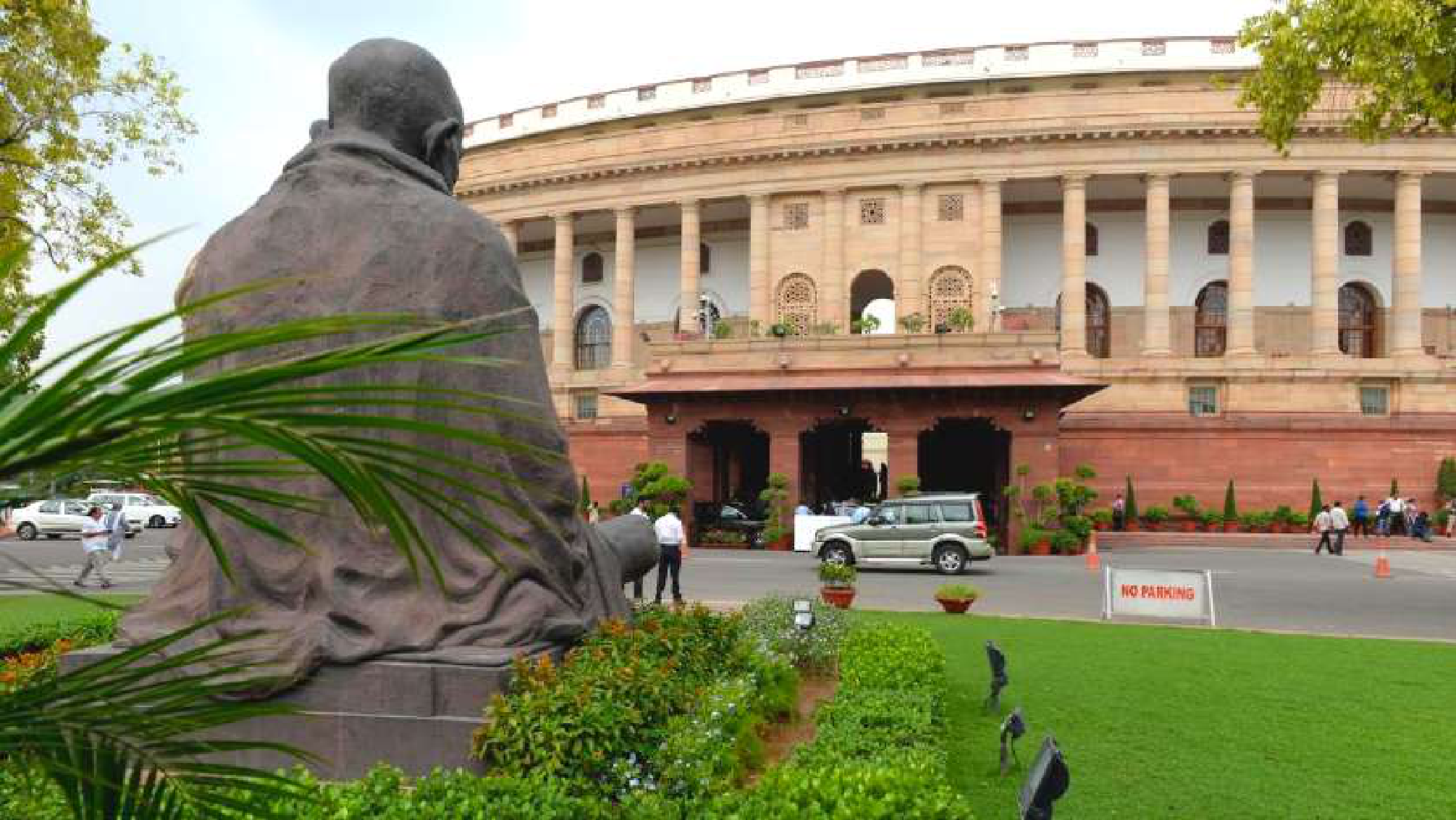
The Indian Constitution has created a bicameral parliament consisting of elected and appointed legislators. The lower house, called the Lok Sabha, has 545 elected members who are directly elected from territorial constituencies, based on a first-pass-the-post system. Lok Sabha members serve up to five years, but the House can be dissolved earlier and new elections can be declared. The upper house, called the Council of States or the Rajya Sabha has 250 members. The members of the Rajya Sabha are filled by representatives of states and union territories, who are elected by the state legislative assemblies through a system of proportional representation by means of a single transferable vote.
Additionally, 12 members of the Rajya Sabha are nominated by the President from amongst individuals who have achieved the highest distinction in various fields like the sciences, arts, public service, or literature. The members of the Rajya Sabha have tenure of six years, making it a continuing house with one-third of its members retiring every two years. The Prime Minister and the Council of Ministers can be members of either house, but must enjoy the support of the majority in at least the Lok Sabha.
The Lok Sabha chooses its Speaker and Deputy Speaker from among the elected members, and either can be removed if a majority of the House moves a resolution to that effect. The Vice President is the ex officio chairperson of the Rajya Sabha, and the House chooses its deputy chairperson under its own rules. These officials preside over the proceedings of the respective houses. The presiding officers do not have the right to vote unless to break a tie.
- https://legislativebodiesinindia.nic.in/parliament%20of%20india.htm
- Article 93, The Indian Constitution
- Article 94, Ibid
- Article 89, Ibid
- Articles 100(1) and 100(2), Ibid
Bills can be introduced both by the government through ministers, and by members other than ministers through private bills. India does not have a formal pre-legislative consultation process. Under the current practice, relevant ministries or departments of the government formulate legislative proposals, with the expectation of consultation with various interests groups. The Ministry of Law and Justice advises on the legalities, and prepares a draft bill on the lines of the ministry’s or department’s office memorandum delineating the details of the proposed bill.
A note that includes the draft bill, views of concerned ministries, and implications of the proposed legislation, is then sent for the cabinet’s approval. After incorporating revisions, the relevant ministry compiles a statement of objects and reasons, notes on clauses, financial memorandum on expenditures involved, and a memorandum on delegated legislation. In some cases, the prior sanction of the President is needed, before finally forwarding the particulars of the bill to the Ministry of Parliamentary Affairs in order to be introduced in the legislative programme.
Ordinary bills can be introduced in either house, but money bills, based on the determination of the presiding officer, can only be introduced in the Lok Sabha. Bills pass through three stages of the legislative process. During the first reading, the member-in charge of the bill asks for leave to introduce the bill in the house, or the bill is tabled if it has been passed by the other house. If the motion for leave passes, the bill is formally introduced in the house.
In cases of opposition, the presiding officer may initiate a discussion, followed by a vote in the house. After the introduction of the bill and its publication in the gazette, the presiding officer may refer it to the Departmentally Related Standing Committees, who are expected to present their reports to Parliament in subsequent sessions. The minister concerned may, with reasons, request the presiding officer of the house to not refer the bill to the Standing Committee in urgent cases.
During the second reading, the house conducts a general discussion on the bill, and may refer it to a Select Committee of the house, a Joint Committee of both the houses, or invite opinions on its contents. The committees are expected to conduct detailed discussions on the bill, invite opinions of the public and experts, consider amendments, and finally submit a report to the house. During the second reading, the house considers the report of the committee, or in the absence of a reference to committees, directly deliberates on each clause. The house votes on amendments to each clause, schedules, long title and other components, which become part of the final bill.
In the third reading, the house considers the bill as a whole, followed by a final vote. In the case of an ordinary bill, both the houses should pass it with a majority of its members present and voting.
- Dipika Jain, ‘Law-Making by and for the People: A Case for Pre-legislative Processes in India’ (2020) 41(2) Statute Law Review 189.
- Article 109(1), The Indian Constitution
- Tarunabh Khaitan, ‘Reforming the Pre-legislative Process’ (2011) 46(25) Economic and Political Weekly 27-30.
- Ibid
- Ibid
- Ibid
In the case of a bill amending the Constitution, a majority of not less than two-thirds of members present and voting is required. Subject to parliamentary law, the quorum is set at one-tenth of the membership of the house. Once this is done, Parliament sends the Bill to the President for his assent.
In case the President withholds assent, they can send the Bill back to the houses for reconsideration. This procedure does not apply to money bills. The President may attach a message, indicating his recommendations and reasons. But if the houses pass the Bill again, with or without amendments, the President is bound to give his/her assent. For a bill to be passed as legislation, it needs to be passed by both houses. If there is disagreement between the two houses, the Constitution mandates that the President call for a joint sitting of the two houses to vote together.
The bill will be deemed to have passed if it gets the support of the majority of the sitting members. Joint sittings are rare, having been called only three times since the inception of Parliament. On all these occasions, the Lok Sabha’s opinion has prevailed.
The Lok Sabha has decisive primacy with respect to money bills. Bills are deemed to be money bills if they only contain provisions related to financial matters like taxation, financial obligations of the Indian government, and the Consolidated Fund of India, or any matter incidental to these subjects. Money bills can only be introduced in the Lok Sabha, and cannot be introduced without the recommendation of the President and thus the support of the government.
The Rajya Sabha is only allowed to give recommendations within a stipulated period and those recommendations may or may not be accepted by the Lok Sabha. The Speaker of the House has the power to determine whether a bill is a money bill. The constitutional text reads, “[i]f any question arises whether a Bill is a Money Bill or not, the decision of the Speaker of the House of the People thereon shall be final.”
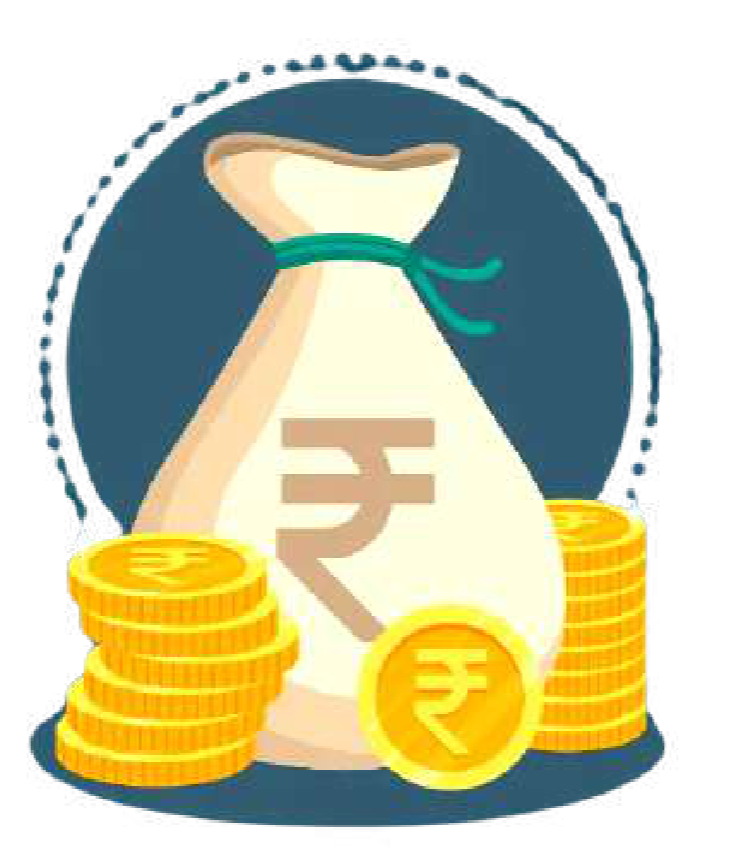
- Article 100(3), The Indian Constitution
- Article 111, Ibid
- Article 107, Ibid
- Article 108, Ibid
- Article 110(1), Ibid
- Article 109(1), Ibid
- Article 117(1), Ibid
- Article 109(2), Ibid
- Article 110(3), Ibid
Reduced Number of Parliamentary Working Days
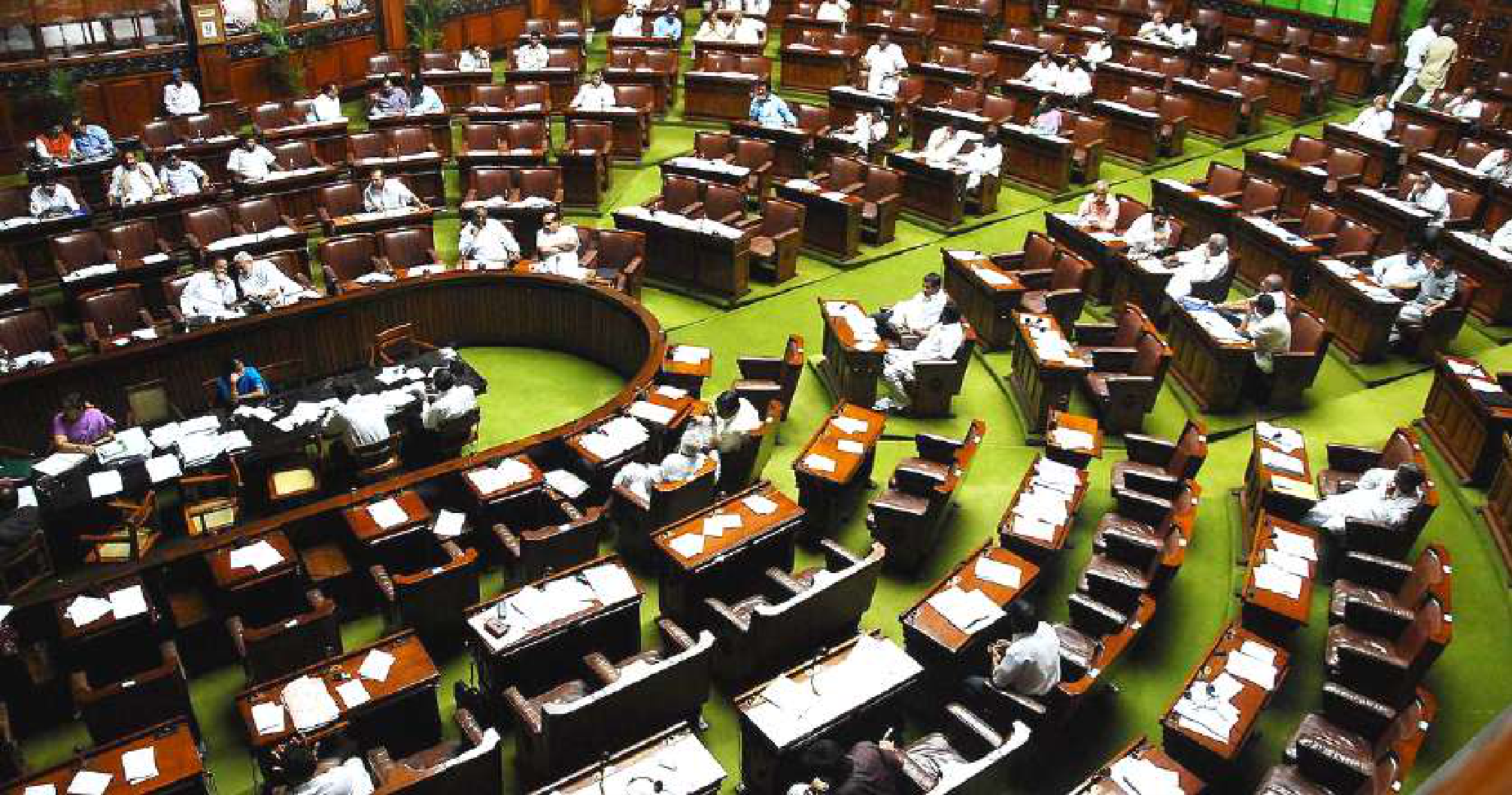
Under the Constitution, legislatures are free to determine their own procedures. Legislatures do not have a fixed calendar for deliberation and legislative work, and it is left to the Executive to summon them. The Constitution only provides that the gap between sessions should not exceed six months. Typically, the Parliament has three sessions in a year, including a budget session from February to May.
Despite calls for introducing a mandated schedule, or mechanisms through which members can call a sitting, no such process has been introduced yet. Scholars of the Indian parliamentary practice have been critical of this gap, and have argued that a lack of a mandatory procedure permits the government to decide upon fewer sittings to escape parliamentary scrutiny. A growing number of commentators and scholars have argued that India’s Parliament has “declined” in terms of its performance and working days. As per data, the number of sitting days in the Lok Sabha has reduced from an annual average of 121 days during 1952-70 to 68 days since 2000. In recent years the trend has been getting worse with the Parliament sitting for only 56 days in 2022.
The legislative scholar, MR Madhavan, has analysed the Parliament’s functioning in terms of frequency of meetings and the time lost due to disruptions. He found that the time lost due to disruptions had increased from 1962 to 2015. According to him, this has resulted in less time being devoted to deliberation and debate over legislative activity and has been detrimental for the parliamentary function of holding the government accountable on the floor of the house.
- Articles 118 and 208, Ibid
- Articles 85 and 174
- Devesh Kapur, Pratap Bhanu Mehta, and Milan Vaishnav (eds), Rethinking Public Institutions in India (OUP 2017)
- BL Shankar and Valerian Rodrigues. The Indian Parliament: A Democracy at Work (OUP 2014).
- https://prsindia.org/parliamenttrack/vital–stats/70–years–of–parliament
- https://prsindia.org/sessiontrack/winter–session–2022/vital–stats
- MR Madhavan, ‘Parliament’ in Devesh Kapur, Pratap Bhanu Mehta, and Milan Vaishnav (eds), Rethinking Public Institutions in India (OUP 2017) 67,75.
- Ibid
- Ibid
The lack of working days clearly undermines the institution of the Parliament. Many scholars have recommended certain revisions in the process to enable more frequent sessions, as well as allowing opposition parties control over the agenda of discussion for a part of the session.
Lack of Discussion on Bills
Over the years the performance of the Indian Parliament has been on a decline specifically in the quality of debates and the time spent on discussing and scrutinizing bills. In this regard, Arthur G Rubinoff, in his 1998 analysis of 50 years of the Indian Parliament, had stated that since Nehru there has been an institutional decline “in status and effectiveness” and “the parliament’s role in India’s political system is more marginal than it was in the country’s early years.” Further in 2009, an EPW article stated that the, “Parliament has been on a downhill course from soon after the early 1950s” and that there is “an accelerated hollowing out of Parliament.”
In recent years, under the current Government, this trend has been getting worse. There are specifically two worrying issues. One is that bills are being passed without a debate, or with discussion involving only the treasury bench members, and the second is the decreasing referral of bills to parliamentary standing committees. In terms of discussion time devoted to bills, in the first two-and-a-half years of the current regime, 35 per cent of the bills were passed in less than 30 minutes.
Further, according to PRS, in the 2021 Monsoon Session in July-August, the Parliament passed several bills within minutes without any discussion. The data shows that the Rajya Sabha passed nine bills at an average discussion time of 17 minutes per bill, while the Lok Sabha passed 11 bills, spending eight minutes on average on each during the session.
With regard to parliamentary standing committees, formed in 1993 to scrutinize bills, the 14th (2004- 2009) and the 15th Lok Sabha (2009-2014) referred 60 percent and 71 percent of the bills, respectively, to parliamentary standing committees. However, only 27 percent of bills were referred during the 16th Lok Sabha (2014-19), the first term of the current government.
This trend has gotten worse during the first two years of the second term of the current government, with only 12 percent of the bills being referred between July 2019 and August 2021. And, in the 2021 monsoon session, none of the 15 bills introduced were referred to a Parliamentary committee. The lack of discussion on bills as well no referrals to Parliamentary committees seriously undermines the legislative process and the spirit of the Parliament.
- Rubinoff, A. G. 1998. The Decline of India’s Parliament. Journal of Legislative Studies, 4(4): 13–33.
- https://www.epw.in/journal/2009/02/editorials/decline–or–death–parliament.html
- https://prsindia.org/sessiontrack/winter–session–2021/vital–stats
- https://prsindia.org/sessiontrack/monsoon–session–2021/vital–stats
- https://www.newindianexpress.com/nation/2021/aug/05/20–bills–passed–in–monsoon–session–without–debate–2340403.html
- https://prsindia.org/parliamenttrack/vital–stats/functioning–of–16th–lok–sabha–2014–2019
- Ibid
- https://prsindia.org/sessiontrack/winter–session–2021/vital–stats
- https://prsindia.org/sessiontrack/monsoon–session–2021/vital–stats
Judiciary
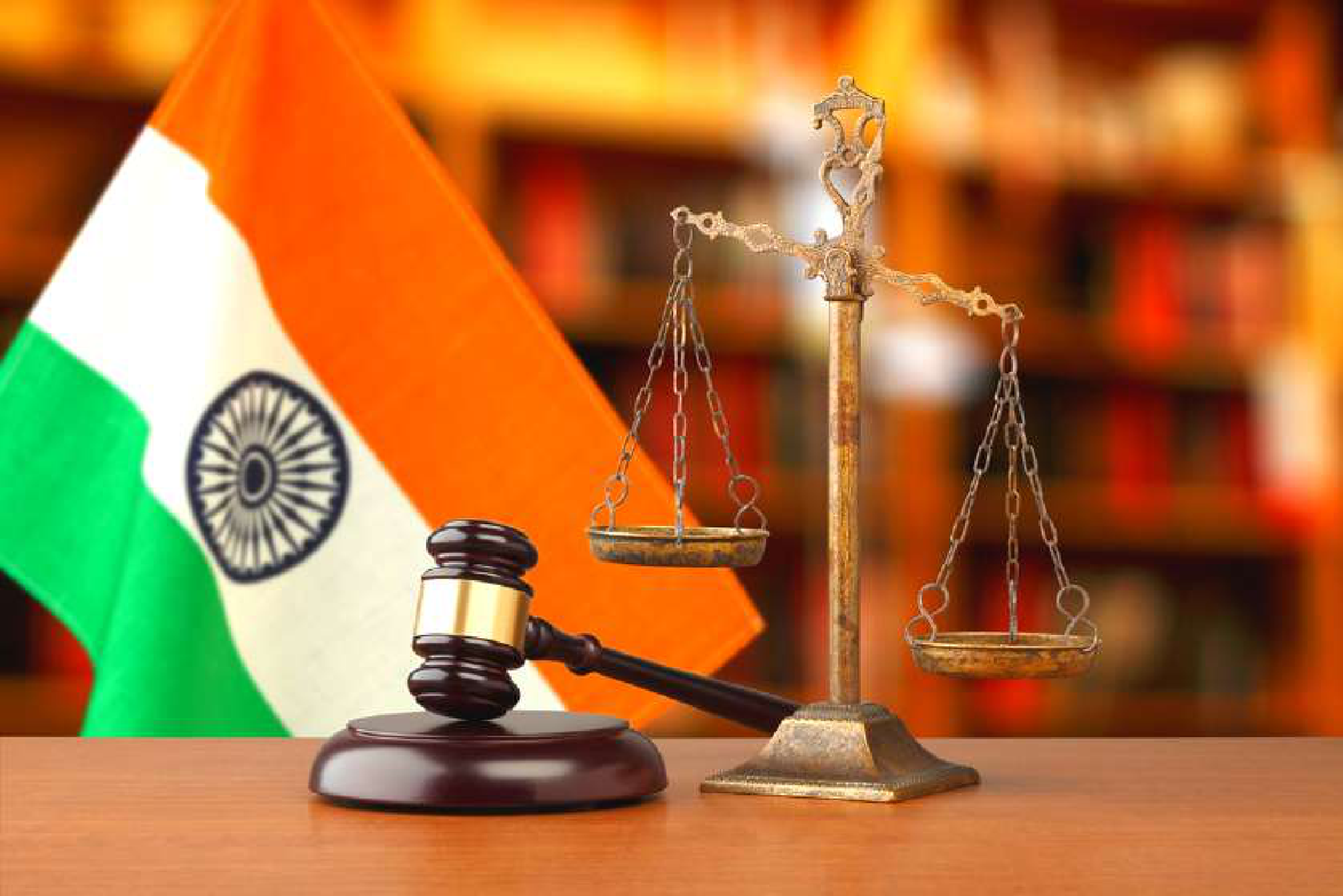
The Indian Judiciary has retained some features of British system, including the common law and the principle of stare decisis, while guaranteeing individual constitutional rights that are enforceable by Indian courts. The court system in India comprises the Supreme Court, which is the highest court in the judicial system, and the States and Union territories have high courts, with civil courts, criminal/sessions courts and various tribunals operating under them.
The Constitution envisages a division of powers and a system of checks and balances. The judiciary plays a critical role in ensuring that the executive does not exceed its Constitutional boundaries and prevents it from the arbitrary exercise of power. The Constitution also ensures that the judiciary remains independent of the influence of the executive.
In legal parlance the independence of judiciary means the power of the judiciary to uphold, without fear or fervor, the Rule of Law, personal freedom and liberty, and impartial and effective judicial control over administrative and executive actions of the Government. Hence the Judicial organ of the State must not be in a position of subordination to another organ or branch.
In this sense the independence of Judiciary depends on the power of the Courts to be exercised without executive interference. This effectively means that the Judges should be independent and free from any restrictions, inducement, influence, pressure or threats from the executive and the legislature.
Further, the Judges must also be independent and free from influence of their colleagues and superiors in discharge of their judicial functions.
Rakesh Kumar Shrivastava, Versha Shah and Megha Srivastava (2014) ‘Update: A Guide to India’s Legal Research and Legal System’, Hauser Global Law School Program, New York University School of Law.
The framers of the Indian Constitution ensured that the independence of Judiciary be a fundamental feature of the Constitution. Dr. B. R. Ambedkar in his speech in the Constitution Assembly observed: “I do not think there is any dispute that there should be separation between the executive and the judiciary and in fact all the articles relating to the High Court as well as the Supreme Court have prominently kept that object in mind.”
The following Constitutional provisions ensure the independence of the Judiciary in India:
- Separation of the Judiciary from the Executive: The Directive Principles of State Policy in Art. 50 mandate that the state take steps to separate the judiciary from the executive.
- Constitution of the Supreme Court and the High Courts: Articles 124, 126, 127, 214, 216, 217 of the Constitution provide for the establishment of the Supreme Court of India and the High Courts in various States, their composition and the procedure for removal of judges.
- Security of Tenure: Security of tenure is provided to the judges of Supreme Court and High Courts.
- Supreme Court Expenses are charged upon Consolidated Fund of India: This effectively means that this item is non-votable in the Parliament. So the Parliament is not in a position to starve funds of the Court.
- Powers and Jurisdiction of Supreme Court: Parliament can only add to the powers and jurisdiction of the Supreme Court but cannot curtail them.
- No discussion on the conduct of judges in State Legislatures/Parliament: Articles 121 and 211 are applicable to the Supreme Court and High Courts which prevent the discussion on the conduct of judges in the discharge of their duties. The exception is with respect to a motion for presenting an address to the President requesting the removal of a judge.
- Power to punish for contempt: Articles 129 and 215 provide the Supreme Court and the High Courts the power to punish for the contempt of the courts respectively.
The notion of judicial independence has been reiterated in the celebrated decision of the Supreme Court in S.P. Gupta v Union of India, where the Court held that, “Judges should be of stern stuff and tough fibre, unbending before power, economic or political, and they must uphold the core principle of the rule of law which says be you ever so high, the law is above you.
- Rakesh Kumar Shrivastava, Versha Shah and Megha Srivastava (2014) ‘Update: A Guide to India’s Legal Research and Legal System’, Hauser Global Law School Program, New York University School of Law.
- Dr. BR Ambedkar, CAD, Vol. VIII, 7 June, 1949.
- https://indiankanoon.org/doc/192717/
- Articles 124, 126, 127, 214, 216, and 217 of the Indian Constitution.
- https://main.sci.gov.in/constitution
- https://doj.gov.in/pay–allowance/
- https://indiankanoon.org/doc/948250/
- Articles 121 and 211 of the Indian Constitution.
- Articles 129 and 215 of the Indian Constitution.
- AIR 1982 SC 149
This is the principle of independence of the judiciary which is vital for the establishment of real participatory democracy, maintenance of the rule of law as a dynamic concept and delivery of social justice to the vulnerable sections of the community. It is this principle of independence of the judiciary which we must keep in mind while interpreting the relevant provisions of the Constitution.”
The Court further held, “…While the administration of justice draws its legal sanction from the Constitution, its credibility rests in the faith of the people. Indispensable to that faith is the independence of the judiciary… the framers of the Constitution took great pains to ensure that an even better and effective judicial structure was incorporated in the Constitution, one which would meet the highest expectations of judicial independence….”
It is important to note that while judicial independence is of utmost importance, this cannot become a basis for making the judiciary completely unaccountable. This point was emphasized in the Constituent Assembly debates by Alladi Krishna Swami Aiyar, who, while advocating for judicial independence, commented that “While there can be no two opinions on the need for the maintenance of judicial independence, both for the safeguarding of individual liberty and the proper working of the Constitution.
The doctrine of independence is not to be raised to the level of dogma so as to enable the judiciary to function as a kind of super legislature or super executive. The judiciary is there to interpret the Constitution or adjudicate upon the rights between the parties concerned.” Thus, the judiciary being an unelected body needs to be independent, but also have some kind of accountability.
The courts in India have always tried to uphold the independence of Judiciary and considered it a basic feature of the Constitution. However, there have been various instances where the judiciary and its independence have been undermined. Some of these instances have been highlighted below.
Post–Retirement Jobs for Judges
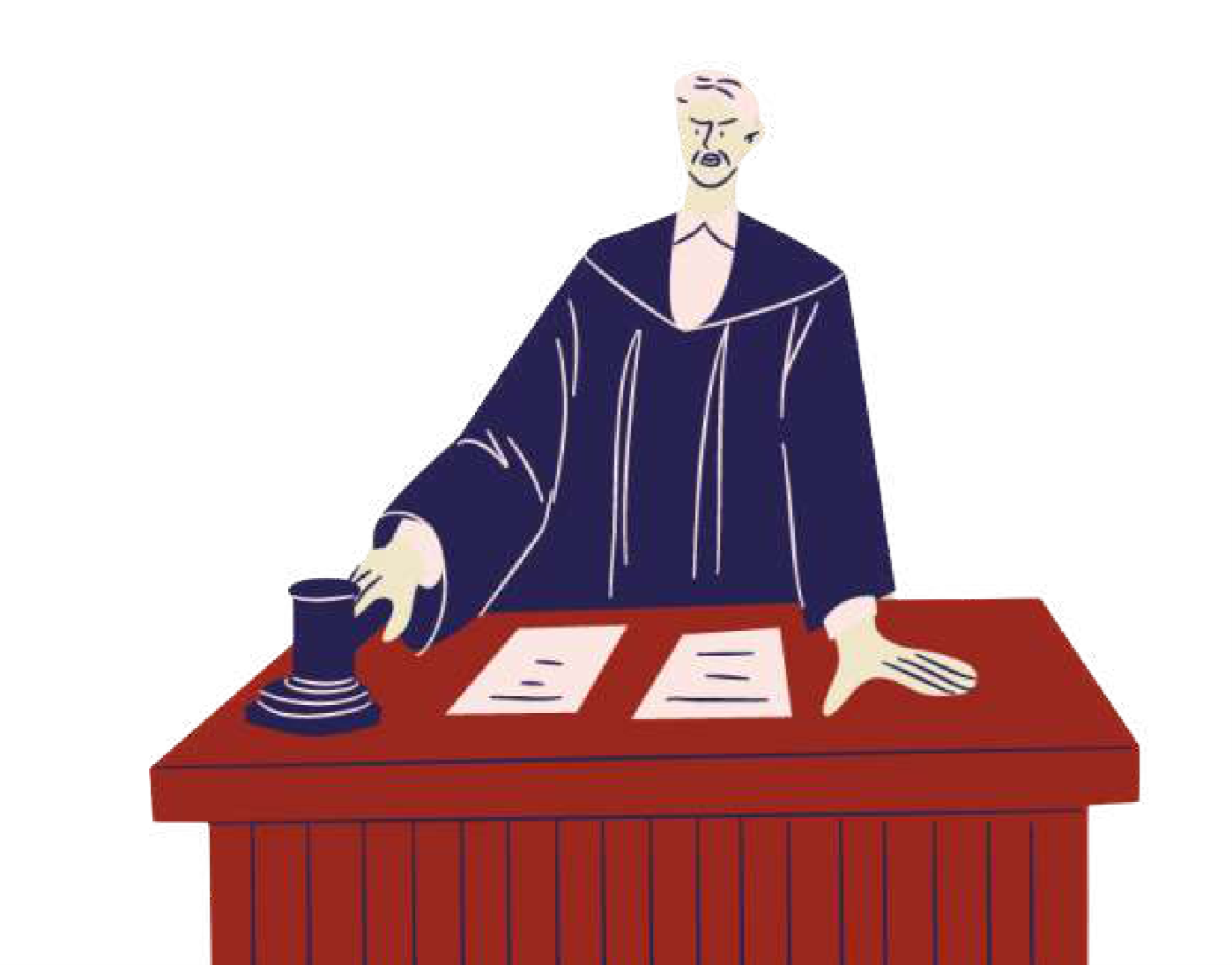
In India, the debate around post-retirement jobs for judges and judicial independence has been a long recurring one. According to a 2016 study by Vidhi Centre of Legal Policy, as many as 70 retired Supreme Court judges had taken up post-retirement appointments in central organizations like the NHRC, National Consumer Disputes Redressal Commission, the Law Commission of India etc..
Further, about 36 per cent of appointments were made to tribunals, ad hoc committees and government positions like Lokayukta. In some cases, the judges had been appointed to commissions even four months ahead of retirement.
- Rakesh Kumar Shrivastava, Versha Shah and Megha Srivastava (2014) ‘Update: A Guide to India’s Legal Research and Legal System’, Hauser Global Law School Program, New York University School of Law.
- https://s3.documentcloud.org/documents/3234234/Vidhi–Briefing–Book–Law–in–Numbers–2.pdf
Wile 56 per cent of the appointments were made because they were required by law, the others were ad hoc appointments. Furthermore, over the last few years there has been an exponential increase in the number of post-retirement appointments, with more of these appointments becoming political in nature. The last nine years of the current regime has seen as many gubernatorial appointments of retired Supreme Court judges as seen in the last six decades.
When the issue of post-retirement jobs for judges was discussed during the Constituent assembly debates, the assembly was decidedly against barring judges from taking up such appointments. On 7 June 1949, Professor KT Shah moved a motion, which, if passed, would have prohibited judges of the Supreme Court or of any of the high courts, who had served for five consecutive years on the bench, from being appointed to any executive office.
Professor Shibban Lal Saksena, who supported Shah’s motion, explained: “if the temptation of being appointed to other high positions after retirement is not removed, it will also be liable to be abused by the Executive or by any party in power and they may hold out such temptations which might affect the independence of the judiciary. I personally feel that the amendment is very salutary and healthy … I hope that somewhere in our Constitution the principle enunciated here will be embodied so that the judiciary may be above temptation and nobody may be able to influence it.”
Dr BR Ambedkar, however, disagreed with Shah’s suggestion, and ultimately the constituent assembly voted against such a proscription. Dr. Ambedkar observed, “The judiciary to a very large extent is not concerned with the executive: it is concerned with the adjudication of the right of the people and to some extent of the rights of the Government of India and the Units as such….To a large extent [the judiciary] would be concerned in my judgment with the rights of the people themselves in which the government of the day can hardly have any interest at all. Consequently the opportunity for the executive to influence the judiciary is very small and it seems to me that purely for a theoretical reason to disqualify people from holding other offices is to carry the thing too far.”
Over the years, those in favour of post-retirement jobs have primarily argued that the valuable experience and insights that competent and honest judges acquire during their period of service cannot be wasted after retirement. However, critics have argued, immediate post-retirement appointments of the judges create a cloud over the sanctity of their judgments, irrespective of their merits.
While arguing against the appointment of judges, in 2012 Arun Jaitley had stated, “In some cases the pre-retirement judicial conduct of a judge is influenced by the desire to get a post retirement assignment…. However, we are still operating under a system where various tribunals and other quasi- judicial assignments are filled up with retired judges.”
- Ibid
- https://thefederal.com/analysis/sinecures–for–retired–judges–9–years–of–modi–rule–equal–six–decade–record/
- Prof. KT Shah, CAD, Vol. VIII, Tuesday, 7th June, 1949.
- Prof. Shibban Lal Saksena, CAD, Vol. VIII, Tuesday, 7th June, 1949.
- Dr. BR Ambedkar, CAD, Vol. VIII, Tuesday, 7th June, 1949.
- https://www.livelaw.in/top–stories/judges–should–be–prohibited–from–accepting–executive–positions–post–retirement–senior–advocate–dushyant–dave–223553
- https://www.outlookindia.com/website/story/quit–or–be–sacked/283944
Considering Ambedkar’s position it is clear that he was mistaken to believe that the judiciary would not be concerned with the executive. As the history of independent India has shown us, the Supreme Court and the high courts often sit on judgment over executive action. The courts are vested with the power to issue writs quashing executive decisions, and the government of the day, therefore, has a fundamental interest in how the judiciary functions.
A 2017 study had found Supreme Court judges who deliver verdicts that favour the government have a better chance of being appointed to post-retirement jobs. The study looked at a sample of around 650 judgments from the Supreme Court between 1999 and 2014. These judgments were chosen from a pool of over 2,600 cases involving the Union government during this period. The study concluded that “authoring judgments in important cases decided in favour of the government is indeed positively associated with securing a post SC job”.
According to the authors, “This suggests the presence of corruption in the form of government influence over judicial decisions.” Therefore, it can be argued that the inducement of post-retirement jobs for judges can create a conflict of interest and influence pre-retirement judgments.
In the master of roster case the Supreme Court had reiterated that public confidence was the greatest asset of judiciary. It stated, “The faith of the people is the bed-rock on which the edifice of judicial review and efficacy of the adjudication are founded. Erosion of credibility of the judiciary, in the public mind, for whatever reasons, is greatest threat to the independence of the judiciary.” Thus, even a perception of bias can have a negative impact on judicial independence.
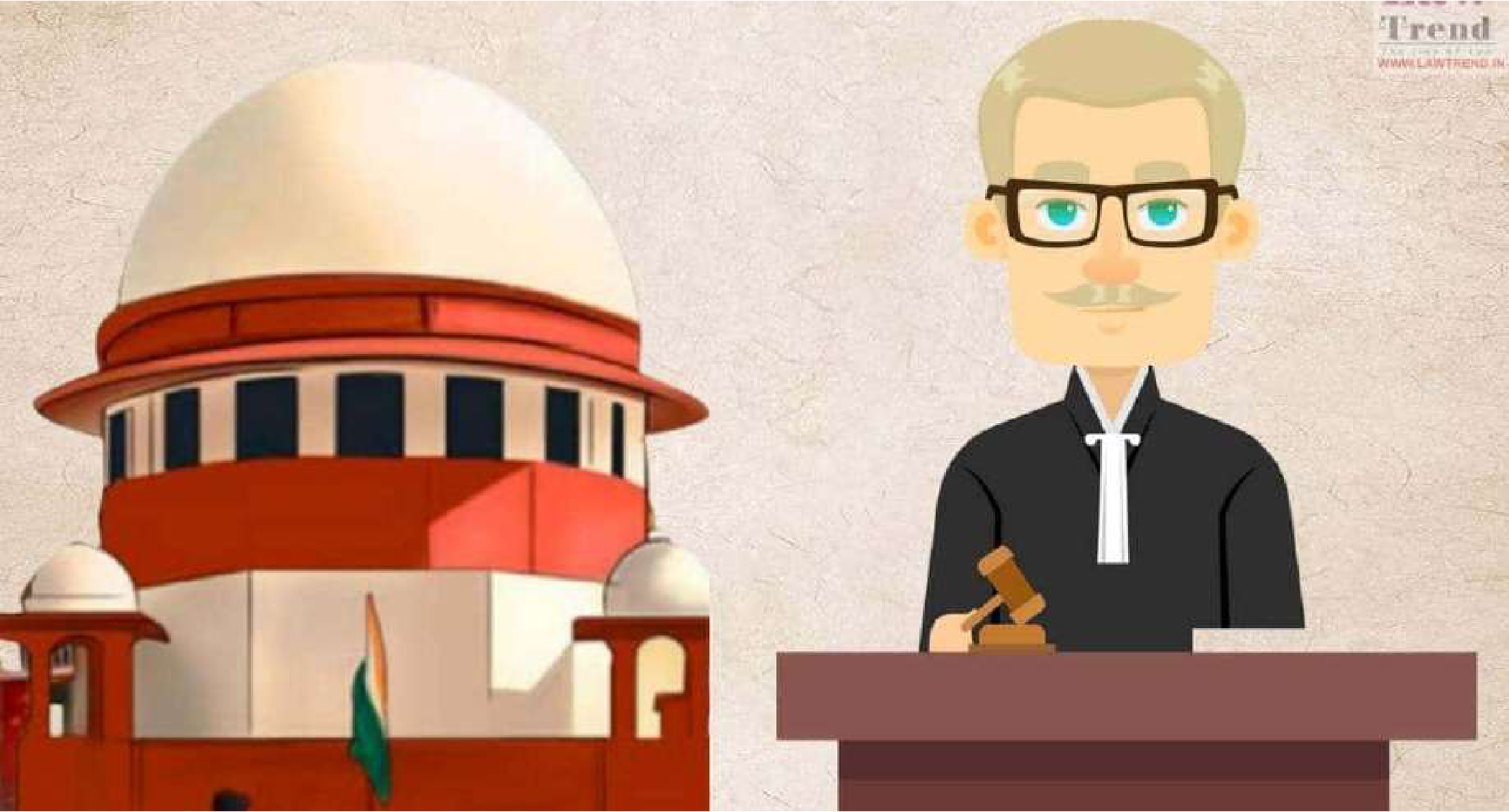
- Ibid
- https://thefederal.com/analysis/sinecures–for–retired–judges–9–years–of–modi–rule–equal–six–decade–record/
- Prof. KT Shah, CAD, Vol. VIII, Tuesday, 7th June, 1949.
- Prof. Shibban Lal Saksena, CAD, Vol. VIII, Tuesday, 7th June, 1949.
While, it is important that the valuable experience of judges should not be wasted, immediate post retirement appointments cannot come at the expense of judicial independence. Government-sponsored post-retirement appointments will always continue to raise suspicion over judgments.
Therefore, it is necessary to put in place a process to regulate post-retirement appointments of judges which has minimal influence of the executive, in addition to having a mandated cooling off period. This can ensure that the expertise of the judges is leveraged without undermining judicial independence.
Withholding Assent for Appointment of Judges recommended by the Collegium
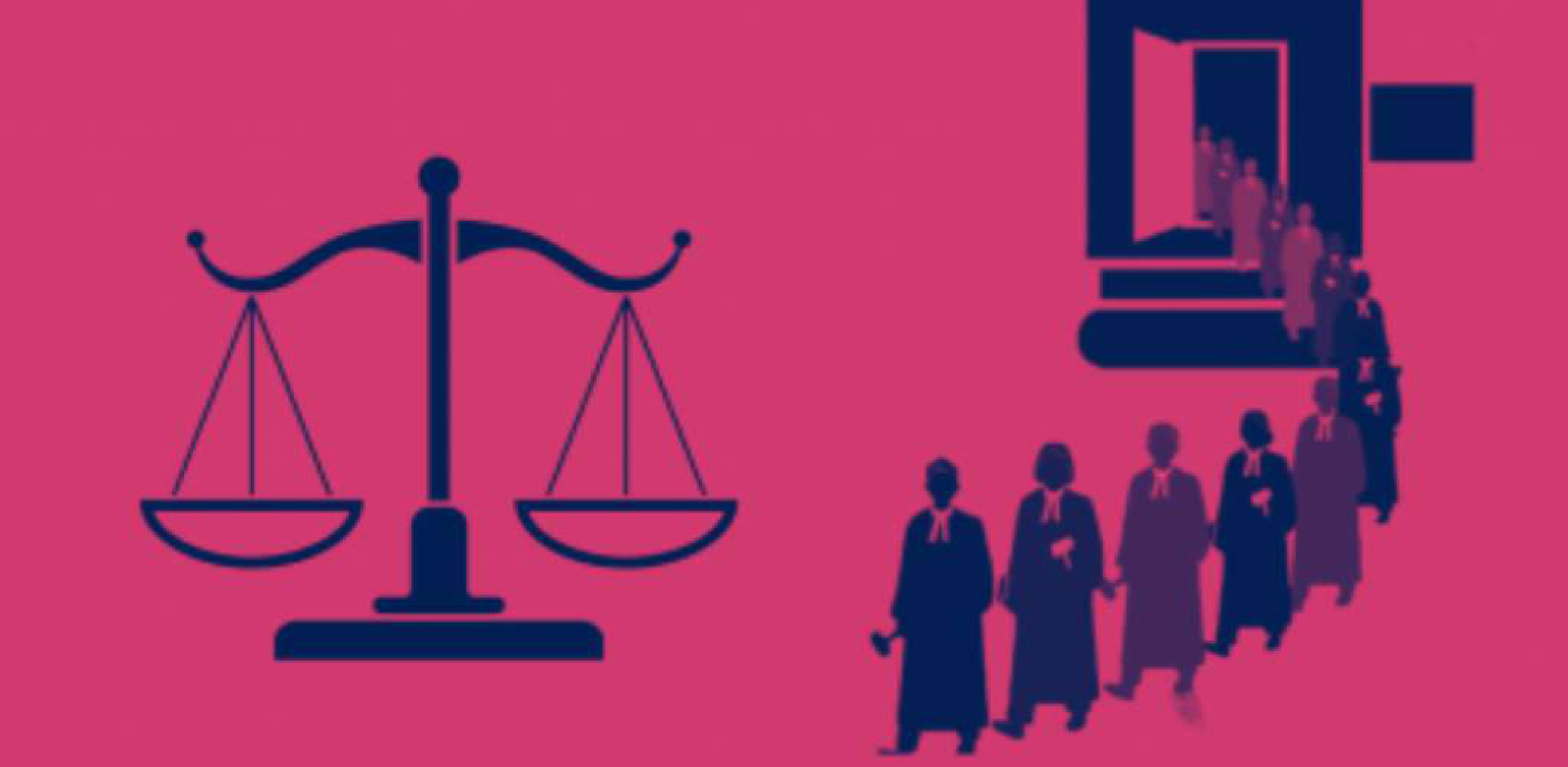
An open conflict has been going in this matter. The Advocates’ Association Bengaluru had filed a plea raising the issue of “extraordinary delays” in the appointment of judges to the high courts, which is “detrimental to the cherished principle of the independence of the judiciary”. It referred to 11 names which were recommended and later, reiterated also.
In its April 2022 order, the Supreme Court had said the Centre should appoint judges within three-four weeks if the Collegium reiterates its recommendations unanimously. Terming it “unacceptable”, the Court expressed displeasure on 10th Nov 2023 over the Centre keeping pending the names recommended for appointment as judges in the higher judiciary, including those reiterated by the apex court Collegium.
“Post second reiteration, only the appointment has to be issued. Keeping names on hold is not acceptable; it is becoming some sort of a device to compel these persons to withdraw their names, as has happened,” a bench of Justices S K Kaul and A S Oka said.
Executive – Riding Roughshod over the others
The executive branch consists of the President, Vice President, and a Council of Ministers, led by the Prime Minister. The executive power of the government is vested in the President of India, who is elected to a five-year renewable term by an electoral college consisting of the elected members of both houses of parliament, and the elected members of the legislative assemblies of all the states. The vice president, chosen by an electoral college made up of only the two houses of parliament, presides over the Rajya Sabha. The powers of the president are largely nominal and ceremonial, except in times of emergency. The President can exercise his/her authority only with the aid and advice of the Council of Ministers headed by the Prime Minster.
The president may, however, proclaim a national state of emergency when there is perceived to be a grave threat to the country’s security, or impose direct presidential rule at the state level when it is thought that a particular state legislative assembly has become incapable of functioning effectively. The president may also dissolve the Lok Sabha and call for new parliamentary elections after a prime minister loses a vote of confidence.
It is the Prime Minister who exercises real executive power in the Indian political system. As the head of the Council of Ministers, he/she is chosen by the leader of the majority party in the Lok Sabha and is formally appointed by the president. The Council of Ministers, also formally appointed by the president, is selected by the prime minister. The Council of Ministers and the Prime Minister work on the principle of collective responsibility. They remain in power throughout the term of the Lok Sabha, unless they lose a vote of confidence.
As we saw there has been a constant attempt by the Executive to dominate the other two branches and the trend has accelerated enormously in the period since 2014. But there is another way in which it has been by usurping the powers – the powers given to the states.
Since India follows a federal system, along with the mutual exclusiveness of the three organs, there is also a separation of functions between the union executive and the states. This is done to ensure the union does not usurp the powers of a state. The Constitution contains elaborate provisions to regulate the various dimensions of the relations between the Union and the states, which includes the demarcation of their respective areas of legislation. There is a two-fold method of distribution of legislative powers: (a) With respect to territory; and (b) With respect to subject matter.
- Article 53 of the Indian Constitution
- Article 54 and 56, Ibid
- Article 64 and 66, Ibid
- Article 74, Ibid
- Article 352, Ibid
- Article 356, Ibid
- Article 83(2), Ibid
- Article 75(1), Ibid
- Ibid
- Article 75(3), Ibid
- https://www.legislation.gov.uk/ukpga/1935/2/pdfs/ukpga_19350002_en.pdf
Article 245 provides that (subject to the provisions of the Constitution).
- Parliament may make laws for the whole or any part of the territory of India and
- The legislature of a State may make laws for the whole or any part of the State.
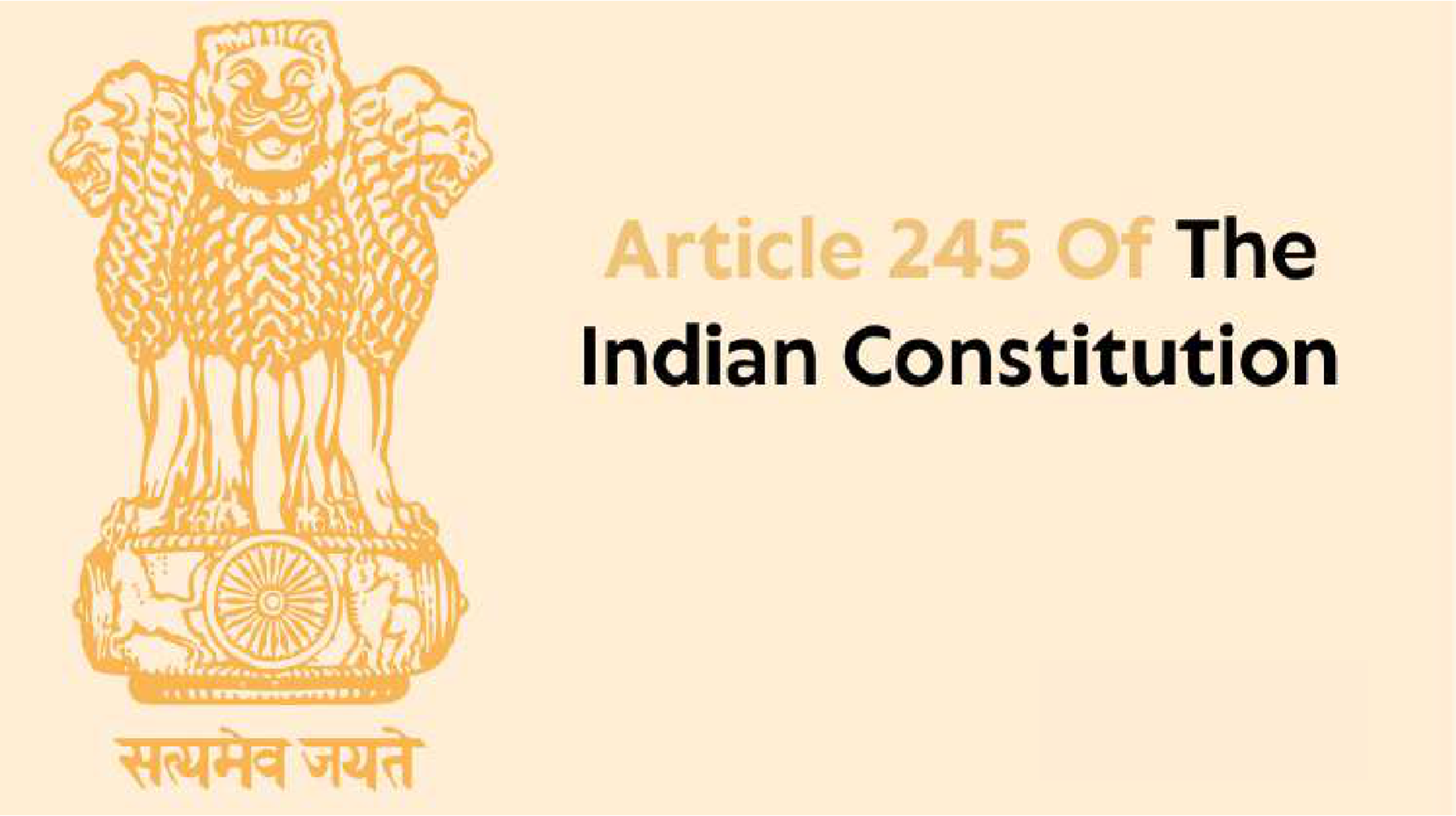
Thus, article 245 sets out the limits of the legislative powers of the Union and the States with respect to geography. However, clause (2) of Article 245 states that a law made by Parliament cannot be invalidated on the grounds that it has extra-territorial operation i.e. it takes effect outside the territory of India. Thus, if any law is made by the parliament regarding extraterritorial operations, no questions can be raised on its validity purely on the grounds of extra-territoriality.
Article 246 of the Indian constitution provides for a threefold distribution of legislative powers between Union and the State Governments based on subject matter. The article provides that:
- The Parliament has exclusive power to make laws with respect to any of the matters enumerated in List I of the Seventh Schedule (the Union List).
- The Parliament and the Legislature of any State has power to make laws with respect to any of the matters enumerated in List III in the Seventh Schedule (the Concurrent List).
- The Legislature of any State has exclusive power to make laws with respect to any of the matters enumerated in List II in the Seventh Schedule (the State List).
- The Parliament also has power to make laws with respect to any matter for any territory of India not included in a State, including the matters enumerated in the State List.
- The provisions of Article 246 are to be read with the entries in the Union List, State List and the Concurrent List in Schedule VII of the Indian Constitution.
Thus, the Constitution of India prevents the possibility of arbitrariness and tyranny by providing for functional separation of powers between the three organs as well as between the Union and the States. The Indian judiciary plays a critical role in ensuring that the executive does not exceed its Constitutional boundaries and prevents it from the arbitrary exercise of power. However, in spite of an extensive system of division of powers there have been several instances where the executive has misused its powers and undermined the Constitutional spirit. Some of these instances are mentioned below.
Misuse of Powers of Governors to Curb the Autonomy of States
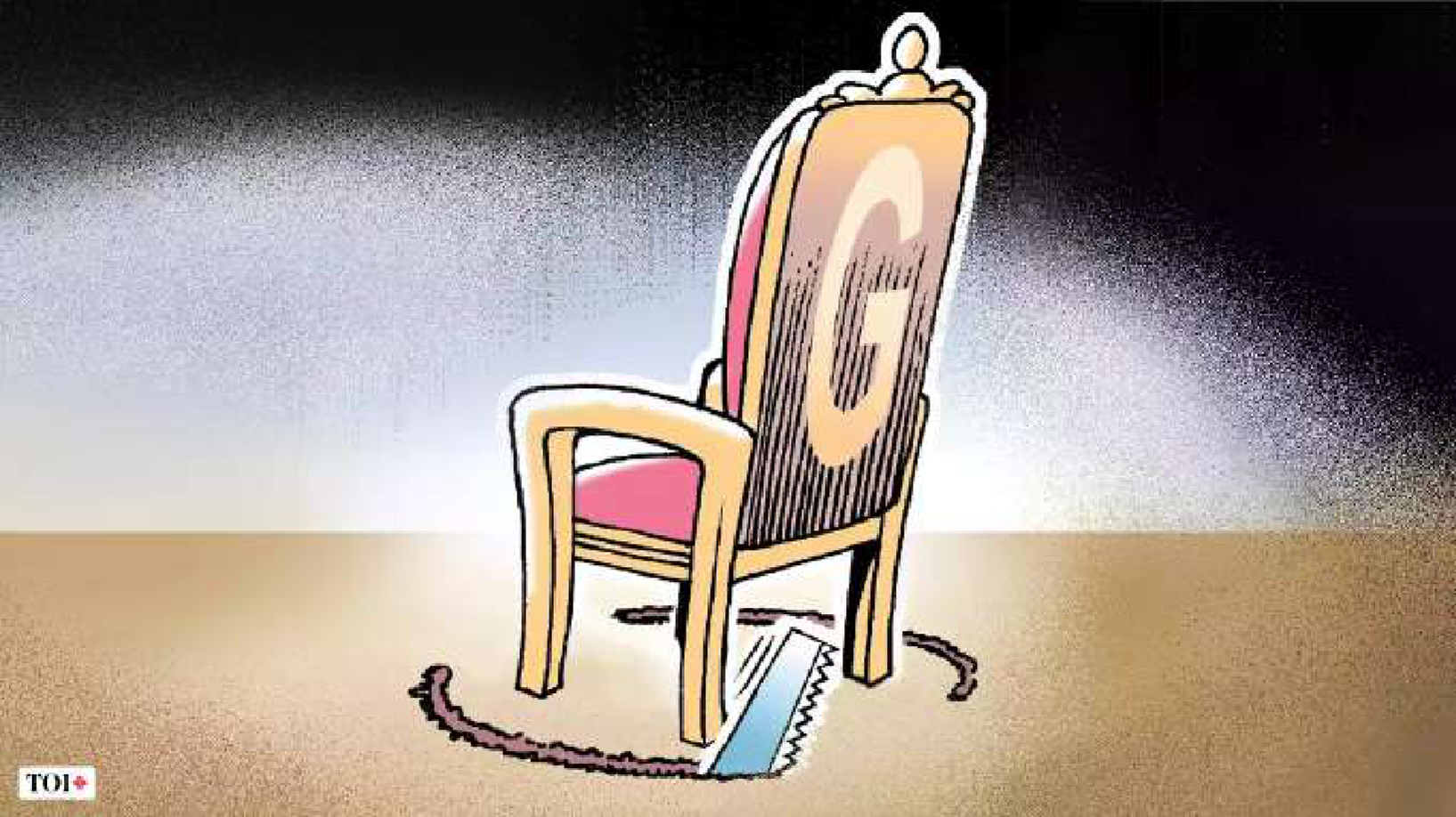
In India, the President and the Governor are often regarded as titular heads of the state. Article 153 of the Indian Constitution specifies the position of a governor. The Governor has been accorded a nominal status, whereas the council of ministers, headed by the Chief Minister, is supposed to run the affairs of a state.
Therefore, on most issues, the governor needs to exercise his powers and functions on the advice of Council of ministers headed by the chief minister. As per Article 155 of the Constitution, the President appoints the Governor under his seal and warrant. However, it is the Central government that files nominations of candidates for the position of Governor, and then the President takes a call. Article 156 of the Constitution, prescribes the Governor’s term in office as being during the pleasure of the President.
A state’s Governor acts in a dual capacity. Firstly, he acts as the executive head of the state, and secondly, he acts as a representative of the central government. The second role of the Governor often leads to friction between his position and that of the state government, especially when a party that governs a state is in opposition to the central government. The primary cause for friction is that a Governor is not elected by anybody and is still perceived as an integral part of the state.
- Article 153 of the Indian Constitution.
- Article 155, Ibid.
- The doctrine of pleasure has its origins in English law. In England, the moral rule is that a civil servant of the Crown holds office during the pleasure of the Crown. This means his services can be terminated at any time by the Crown, without assigning any reason. Even if there is a contract of employment involving the Crown, the Crown is not bound by it. The doctrine of pleasure is based on public policy and this pleasure is absolute.
- https://legalaffairs.gov.in/sites/default/files/The%20Institution%20of%20Governor%20under%20the%20Constitution.pdf
- Ibid
Moreover, the state government has no power to overrule the orders of the Governor, and neither is there a procedure for his impeachment. Thus, the Governor essentially has no accountability to anyone, apart from the people who have appointed him. If the Governor acts in a manner against the interests of the people of the State, as perceived by the State Legislature they cannot do anything except complain to the President.
Additionally, the Chief Minister is also appointed by the Governor. Under circumstances where one party gets a clear majority, the Governor may have no discretion in the matter, however, when no single party or coalition gets a clear majority, the Governor has the discretion to exercise his judgment on who should be invited.
Over the years since independence there has been a rise of various regional political parties which has led to a situation that different political parties are in power in different States. In such a situation and because the Governor owes his appointment and his continuation in office to the Union Council of Ministers, in states where different parties are in power than the central government, there is apprehension that he is likely to act in accordance with the instructions, received from the Union Council of Ministers rather than on the advice of the state Council of Ministers. Consequently, they have often been called agents of the Centre.
Some examples of the misuse of power of Governors by the Union Executive:
- In the 2017 election, in the 60 member assembly in Manipur, Congress emerged as the single largest party winning 28 seats, however Governor Najma Heptulllah invited BJP to prove majority. Later BJP got together 4 MLAs from the National People’s Party, 4 from the Naga Peoples Front and one from TMC to form the government, with BJP’s Biren Singh sworn in as Chief Minister of the state.
- In 2017 in Bihar, Nitish Kumar-led JD(U) broke the alliance with Congress and RJD, and later formed an alliance with the BJP and staked claim to form the government. BJP appointed Governor Keshari Nath Tripathi ignored the single largest party RJD’s claim and made Nitish Kumar the Chief Minister.
- In the 2018 Meghalaya elections, Congress, despite winning more seats than any other party, could not form the government. In the 50 seat assembly, the Congress won 21 seats, followed by NPP 19, and BJP and UDP, two and six, respectively. However, governor Ganga Prasad invited Conrad Sangma of the NPP to prove his majority. Sangma’s NPP formed an alliance with the UDP, PDF, HSPDP, and the BJP to form the government in the state.
- After the 2019 assembly election results, the tussle over the CM post among BJP, NCP, Shiv Sena, and Congress led to a political crisis in Maharashtra. Due to disagreement, no political party was able to prove its majority to form a government and the President’s rule was imposed in the state on the basis of a report of the Governor. In his report, the governor said a situation had arisen in the state such that even after 15 days of election results being declared a stable government was not possible.
- The Tamil Nadu Governor Mr RN Ravi had been sitting on a number of Bills which were passed by the state assembly and eventually did not provide assent to ten of those, leading the Supreme Court to question Ravi’s decision later to forward those for the assent of the President. The matter has not been resolved as this article was being written. But it has led many to ask whether the Governor was behaving constitutionally.
Curbing of the Freedom of the Fourth Estate
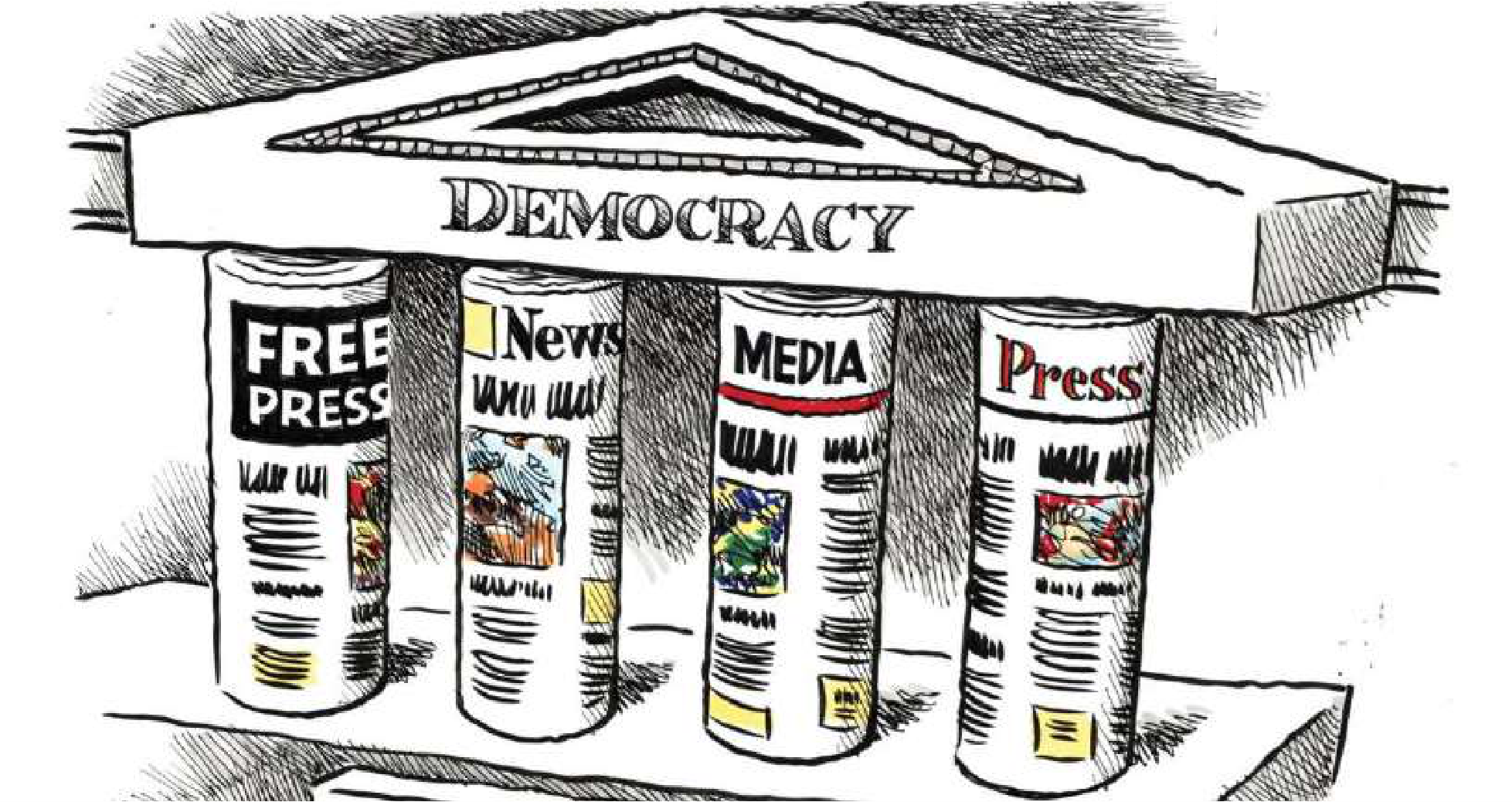
A 2020 study by Free Speech Collective found that 154 journalists were “arrested, detained, interrogated or served show cause notices for their professional work” between 2010 and 2020, in India, with 40% of these cases occurring in 2020. These journalists predominantly worked for non-English media houses, or were freelancers or worked with the digital media.
The study was based on an analysis of various summons, detentions, arrests, questionings and show- causes notices against journalists over the past decade. It found that along with cases being filed under various sections of the Indian Penal Code (IPC), terror and sedition related charges had also been increasingly applied against journalists. The journalists were mainly booked under sections of the Unlawful Activities (Prevention) Act and the Official Secrets Act. The study said: “For journalists reporting from conflict areas like Jammu and Kashmir, constant surveillance and summons from the police or administration over news reports is routine, with the unspoken threat of a case being filed if journalists continue to challenge the invisible boundaries drawn for them.”
- https://timesofindia.indiatimes.com/india/maharashtra–political–crisis–timeline/articleshow/72208164.cms
- https://www.thehindu.com/news/national/other–states/presidents–rule–imposed–in–maharashtra/article61620369.ece
- Ibid
- https://freespeechcollective.in/2020/12/24/behind–bars–arrests–and–detentions–of–journalists–in–india–2010–2020/
- Ibid
- Ibid
Some recent incidents of arrest post 2020 (see Appendix B for detailed case studies):
- Keralite journalist Siddique Kappan was arrested in October 2020 while he was on his way to Uttar Pradesh to report on the Hathras gangrape case, when a 19-year-old Dalit girl was raped and murdered. The police claimed he had links with now-banned outfit Popular Front of India (PFI) and was plotting a conspiracy to incite violence in the state. He was subsequently charged under the Unlawful Activities (Prevention) Act and was imprisoned for over two years. While the Supreme Court granted him bail on these charges in February 2021, a separate money laundering case was pressed against him by the Enforcement Directorate the same month. In December 2022, he finally got a bail from the Allahabad High Court in the case filed by the ED. He was then released in February 2023, after more than two years.
- Mohammed Zubair, journalist and co-founder of Alt-News, a fact-check website was arrested by the Delhi Police in June 2022, on charges of posting an allegedly objectionable tweet in 2018. He was arrested from his residence in Bengaluru and brought to Delhi to join an investigation based on a complaint filed in 2020. He was remanded to a day’s police custody which was extended by four days. Then he was sent to judicial custody for 14 days. The SC granted him interim bail for 5 days, however, there were 6 different FIRs against him in different places across UP, each of which ordered a 14 day judicial custody. His incarceration generated a lot of criticism. Ultimately, the Supreme Court granted him bail in all 6 cases on 20 July 2022, nearly a month after he was arrested, calling the FIRs a “vicious cycle” of police action.
- Teesta Setalvad, journalist, co-editor of anti-communalism portal Sabrang, and a human rights activist was arrested in Ahmedabad by the Antiterrorist Squad (ATS) of the Gujarat police on charges of alleged forgery and conspiracy on 26th June 2022, following the Supreme Court judgment in the Zakia Jafri case. A day before the arrest, an ATS team forcibly entered her residence in Mumbai, Maharashtra, detained her without a warrant and took her to Ahmedabad. She was then produced before a magistrate and remanded to police custody till 2 July. She was later granted interim bail by the Supreme Court in September 2022.
According to the annual World Press Freedom Index, compiled by the group Reporters without Borders, India has experienced a steady decline in press freedom since 2016. It has slipped from a position of 133 out of a total of 180 countries in 2016, to 140 in 2019, and it currently (2022) stands at the 150th position. The Constitution of India recognizes the freedom of the press as an essential part of the freedom of speech and expression as guaranteed in Article 19(1)(a).
Press freedom is the amalgamation of all civil and political rights. In a democratic set up the press acts as a bridge between the government and its people. Democracy cannot survive without this right. With the increasing attacks and jailing of journalists, this space for press freedoms is shrinking consistently. The ongoing suppression of the freedom of the press in India undermines the very essence of democracy.
- https://www.indiatoday.in/india/story/846–days–timeline–of–siddique–kappans–case–as–he–walks–out–of–jail–2329454–2023–02–02
- Ibid
- https://indianexpress.com/article/india/zubair–case–timeline–from–arrest–to–bail–8041711/
- Ibid
- Ibid
- https://thewire.in/media/backstory–the–teesta–arrest–points–to–medias–deliberate–amnesia–over–gujarat–pogrom
Conclusion
As we see from the survey of above, every constitutional value laid down in the Preamble, justice, liberty, equality and fraternity, and every democratic institution – the legislature, the judiciary and the fourth estate have been violated over the past ten years. As we approach the 75th anniversary of the adoption of the Constitution on 26th November, we need to reflect whether this is merely the result of a majoritarian regime with an authoritarian leader, which may pass, or it is something deeper and structural and had to surface sometime or the other.
We tend to believe it is the latter – it is a cautionary nudge, nay jolt, to the complacence with which the people of India, particularly its elites, had taken democracy for granted. It would be good to remember the aphorism “The price of freedom is eternal vigilance”, generally ascribed to Thomas Jefferson. However, it was first said by John Philpot Curran’s in a speech on the Right of Election in 1790. He said:
“It is the common fate of the indolent to see their rights become a prey to the active. The condition upon which God hath given liberty to man is eternal vigilance; which condition if he break, servitude is at once the consequence of his crime and the punishment of his guilt”.
